The wars in this region go back for the more than the last 3000 years and are chronicled in the bible! Our trip to the holy land of the world’s three major religions started in Jordan, where we found numerous ancient treasures – such as Petra (bucket list). It would culminate in a crossing over to Israel for 7 days before returning for the flight home!
| 15th December A red-eye flight via Dubai it was… and when we finally touched down in Amman, we were whisked away to the citadel for the sightseeing… oh man it was beautiful but we were so tired! |
||
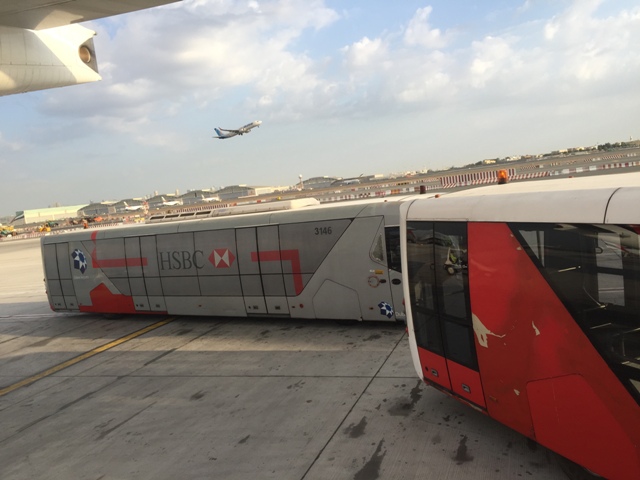 |
 |
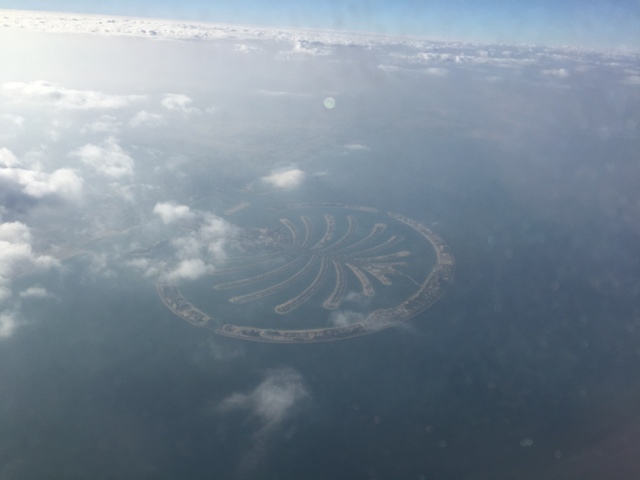 |
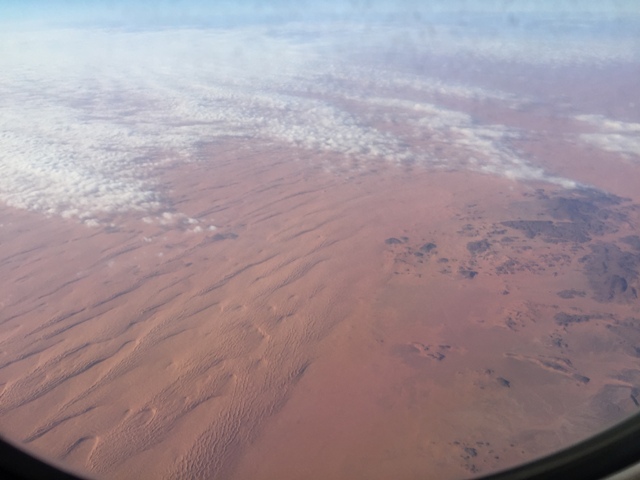 |
 |
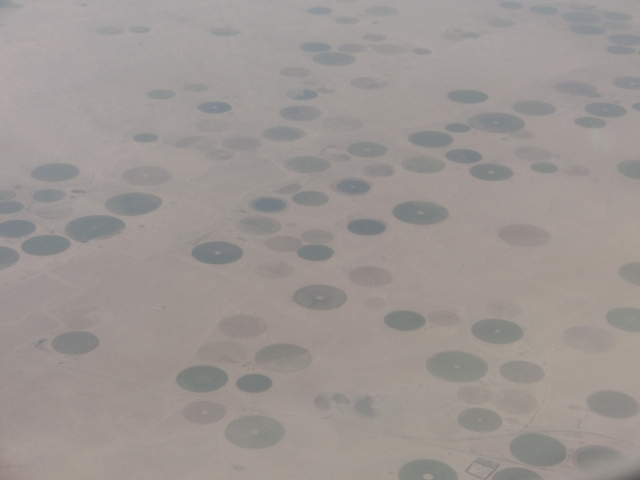 |
| The flight to Dubai was in the night so no scenic views. And strangely our DXB-AMM flight to Amman had to be via the bus to the plane on the tarmac instead of the aerobridge. After a transit of about 3 hours we were soon on the way to Amman. The window we had was not clean, so the photos of the Palm was not ideal. And soon the flight was making its way over the vast Arabian desert that made for great pictures though straining on the eyes since it was so bright. As we approached Amman, we can see the irrigated circles of crops in an otherwise parched desert. Water is said to be drawn from deep underground cisterns we were to learn later. | ||
 |
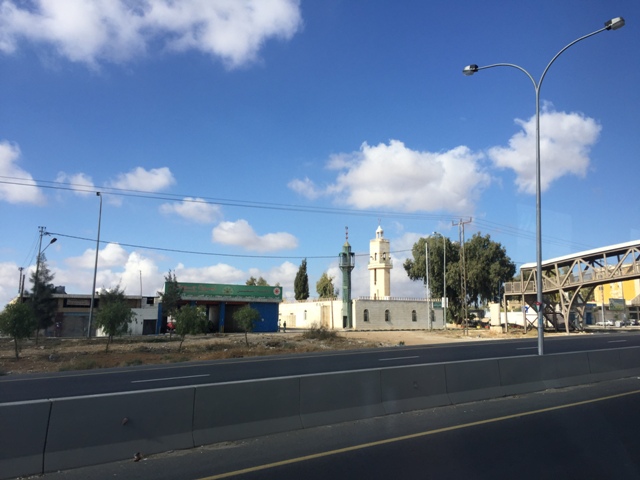 |
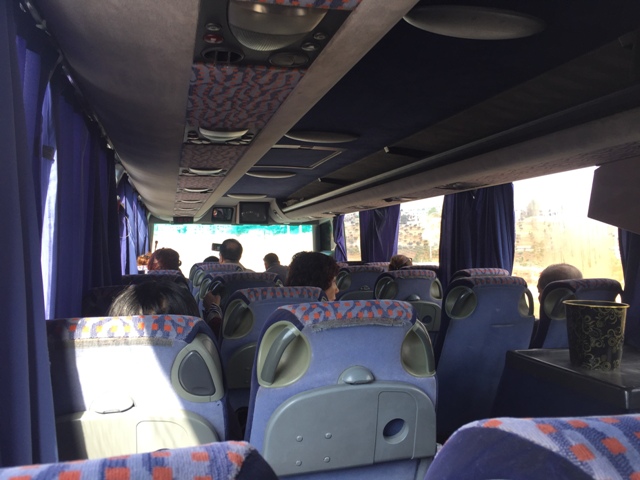 |
| A little about this tour group. We are a bunch of 15, making it rather cozy and easy to gather. And we had the luxury of a full coach that carries 40 folks, so plenty of space onboard! And the coaches here have Wifi too, so you are never really disconnected though speed varies as we drove around Jordan. | ||
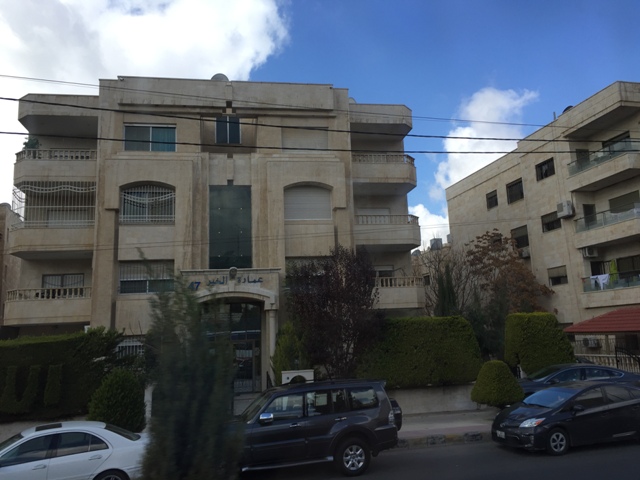 |
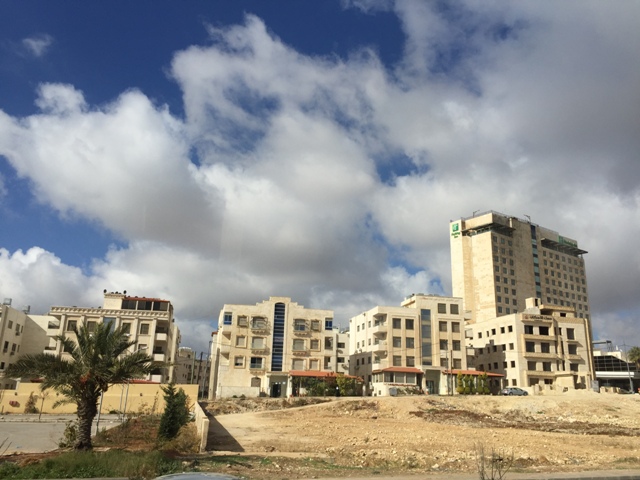 |
 |
| Having driven out of the airport we are now on the way to the citadel of Amman in the old city area. As we drove we had the impression that the city is not all that chaotic as traffic seems well regulated. Perhaps it was due to the fact it was a Friday, and as prayer day most folks were not on the roads. In fact we could only get to the citadel and not the theatre as there were protests that day. So we can only admire the 6000-seat landmark from afar. | ||
 |
 |
 |
 |
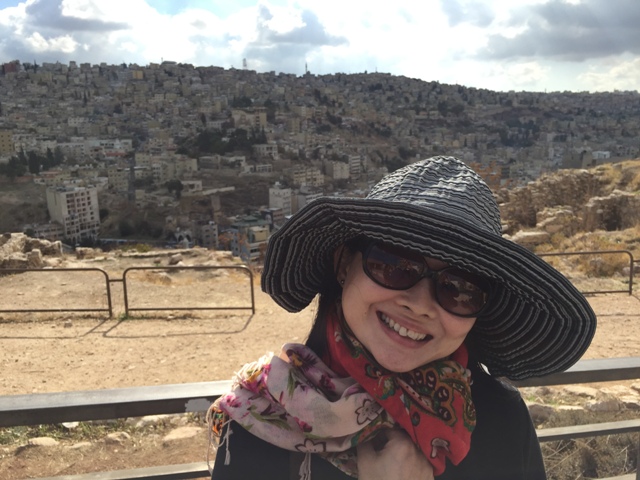 |
 |
| The citadel is old and said to have been constructed by the Phoenicians. It fell to conquering waves as history weaves through time and end up being Greek Philadelphia. And of all the remnants one can see, it is the temple of Hercules (built by the Romans?) that is most prominent with some of its columns still standing. However, after the Arab conquest in the 660s the citadel gradually lost its strategic importance and did not receive a lot of attention. Today it is one of the main sights of Amman affording a beautiful view of the old parts of the city. | ||
 |
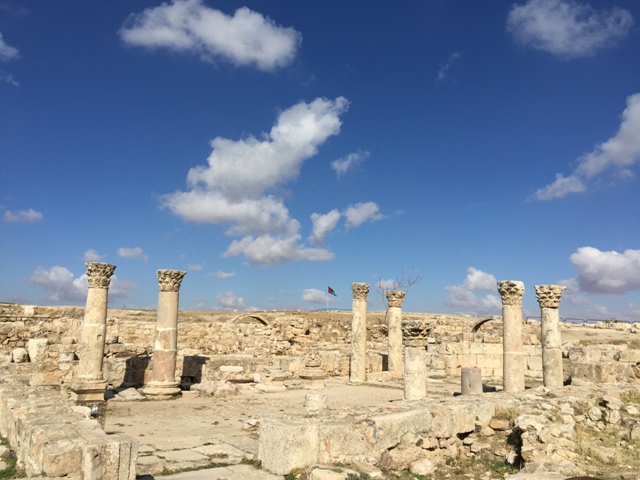 |
 |
| Did you know that Amman is designed as a city in concentric pattern? The old city is considered the first “circle”. And from here our guide pointed out to us the various buildings in the distant that demarcate the outer rings of the city. The city too was occupied by the Byzantines, and they did leave their mark with a church. But it is certainly less prominent than the other landmarks, such as the Umayyad Palace which we walked over to next. Built around the 8th century, it is mostly in ruins. Only this monumental gateway remains. | ||
 |
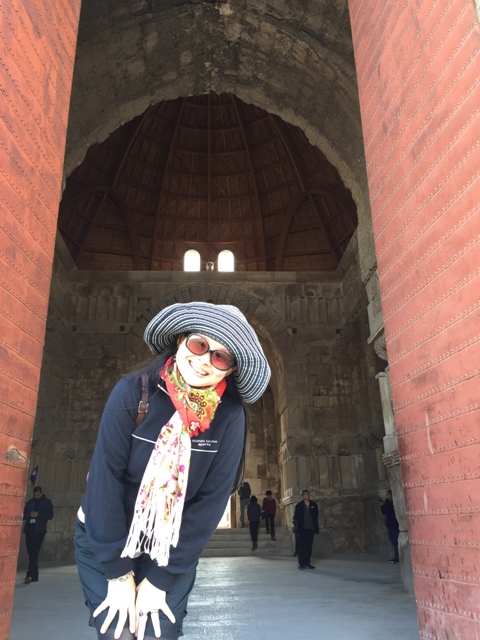 |
 |
 |
 |
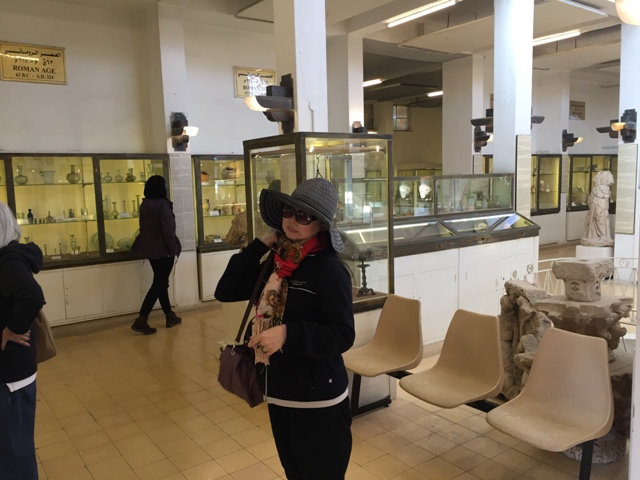 |
| The monumental gateway to the palace is where the restored domed chamber entrance is located. It was a splendid palace, but abandoned. As we circled back around the palace, we come back to the temple of Hercules (it is rather large). Here one can see the remnants of what must had been a colossal statue. Because the size of the hand and fingers suggests so. But one of the highlights for us was the archaeological museum. Although it looks small, it packs a real punch of a collection that chronicles the artifacts recovered across Jordan through the ages from Paleolithic times till the modern conquering civilizations. | ||
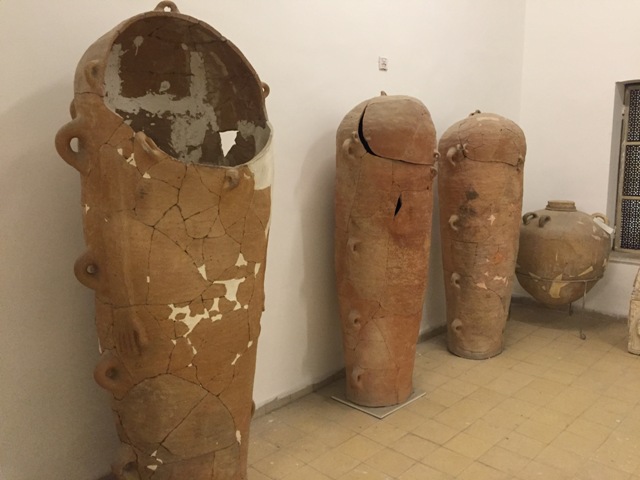 |
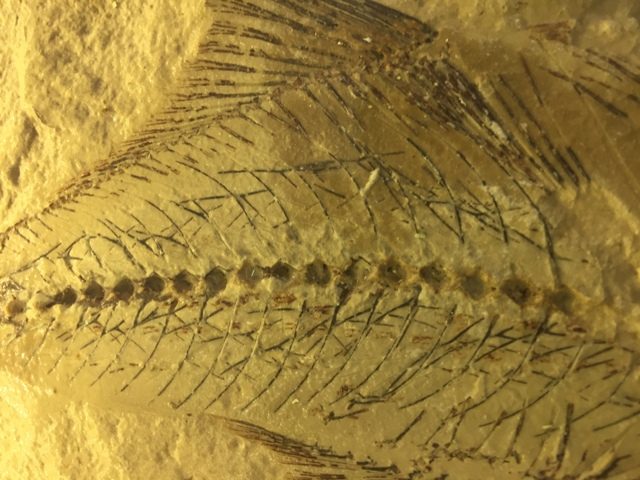 |
 |
 |
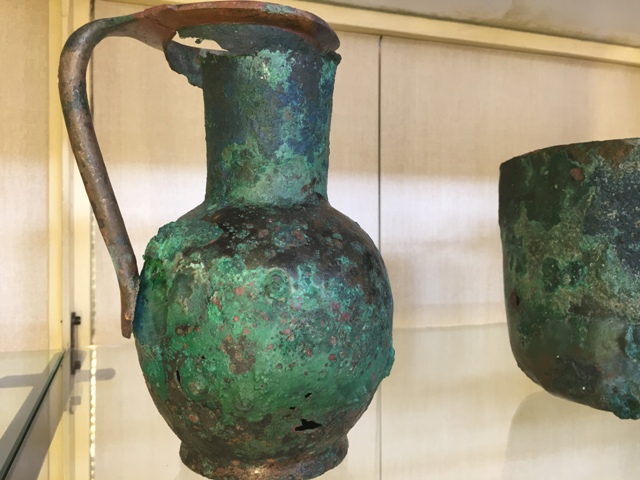 |
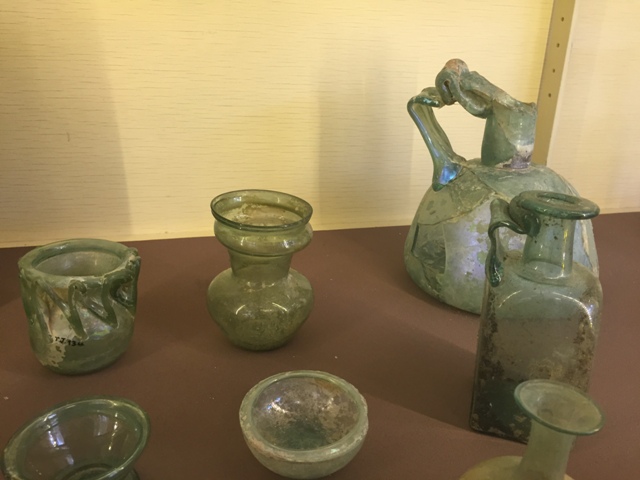 |
| Unfortunately the museum’s dead sea scrolls (including the copper one) are now in the Jordan museum. But nonetheless it was fascinating to see the bronze tools of everyday life on display. Not to mention the trove of Greek art and the coins plus the jewellery too. Could spend more time here if not on a group tour! | ||
 |
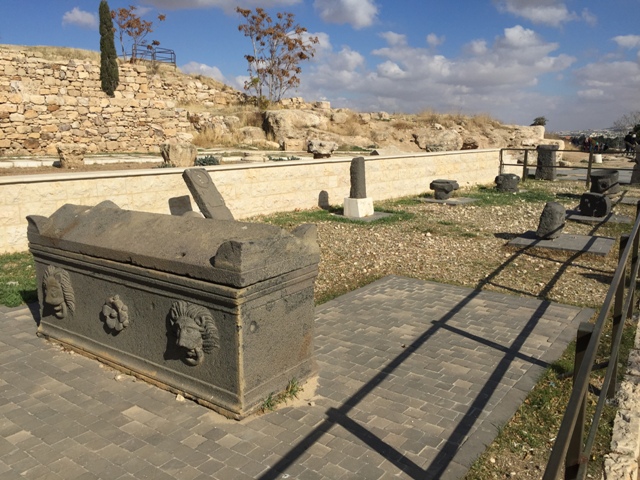 |
 |
| Back now to the outside to enjoy a cool yet beautiful day. Despite being winter, the daytime temperature can reach the 20s during the early afternoon. Perhaps it was only when we were here, but it would still be prudent to bring a thick coat. After this visit, we had our lunch at a local Lebanese-Jordanian restaurant. Wow. Lot of food and having just flown more than 16 hours, we were unable to fully harness pleasures of the meal. The day ended with a drive to view the King Hussein mosque. FYI – the Hashemite dynasty hail from Saudi Arabia and came to rule in 1921, having lost the Hejaz to the Saud family. It has been a very long day. And it was time to head to the hotel to check-in for the night. After a buffet dinner, we were just too tired and fell into a slumber. |
||
 |
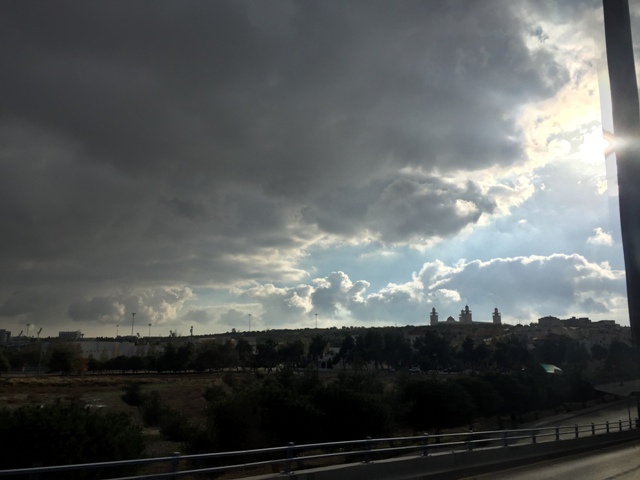 |
 |
Can you imagine how bushed we were?
The thing with short flights (two of them in a row) is you never really fall asleep for long. Yes we are folks that will fall into a slumber anywhere… but even we felt the jetlag this time. And it does not help that in a tour group they start you off immediately when you arrive on sightseeing!
So it was truly appreciated when we checked in, bathed and fell into lovely sleep well before 10pm. In fact, have to say we slept early every night on this journey. For every morning the alarm was set for 6am or sometimes earlier.
| 16th December After a great night sleep, finally started on the road southwards. We touched Madaba, where the mosaics are incredible. But the most important was the drive to Petra for the overnight. Tomorrow’s the day! |
||
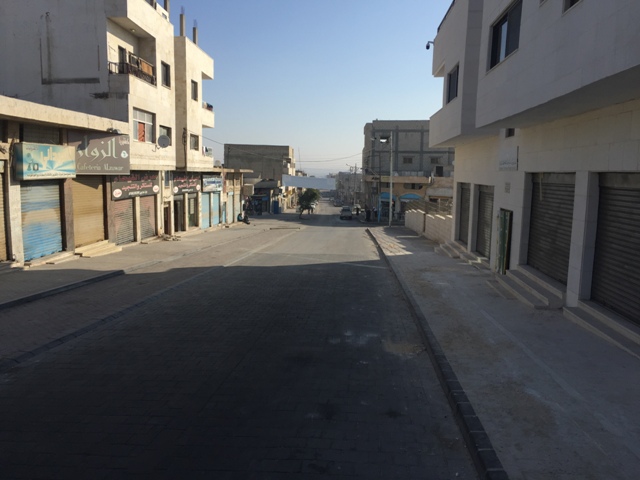 |
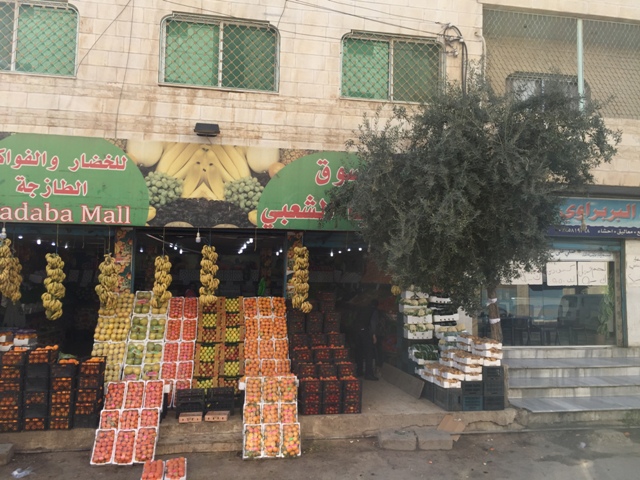 |
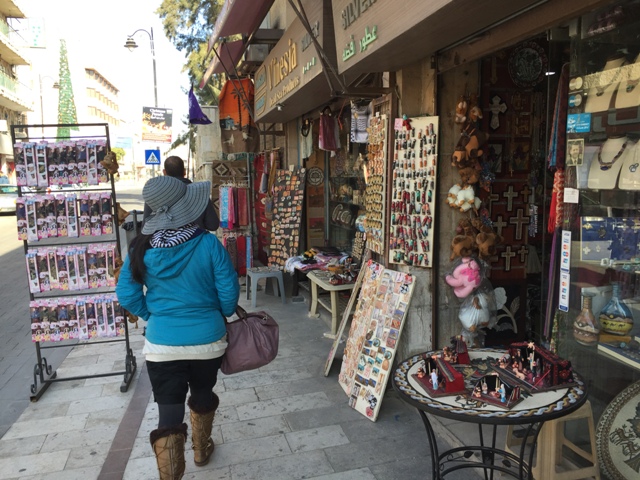 |
| Now we are leaving Amman and enroute to Petra we made a stop at Madaba to see the recovered mosaic map of the Holy Land that guided pilgrims in the past. Now they say the city is also known as the city of mosaics, probably because they specialize in the manufacture and design of mosaic floors and walls. So it was a sleepy Saturday morning as our coach rumbled into town even as the shops were beginning to yawn open. | ||
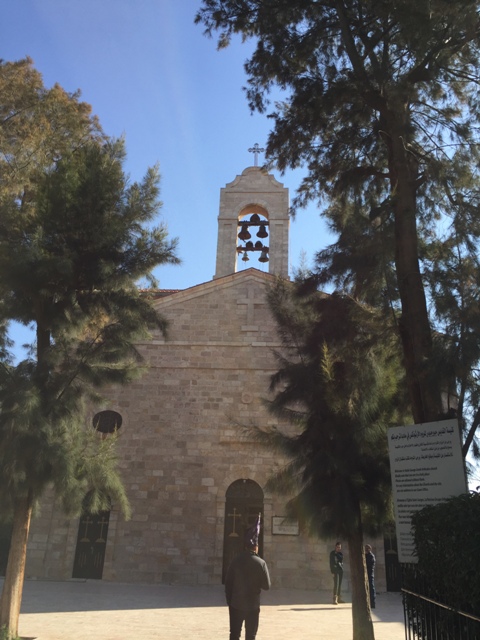 |
 |
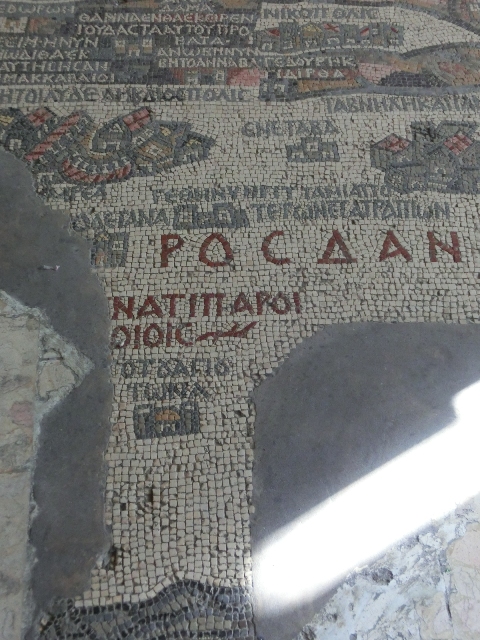 |
| Now the mosaic is now housed in a church (St George) that is a short walk from the city visitor center. Yes the church is “new”, barely 100 years old but it stores one of the most prized mosaics of the ancient world. The current map is said to be only 25% of the original piece. Do you know what the words mean? Much of the damage came from fires and moisture decay over the course of centuries. This is one oldest surviving maps with detailed depiction of the region. From Lebanon in the north to the Nile, Mediterranean to the Arabian desert. | ||
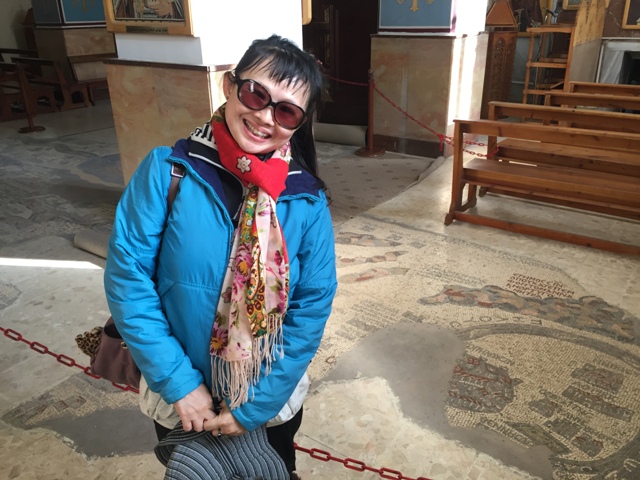 |
 |
 |
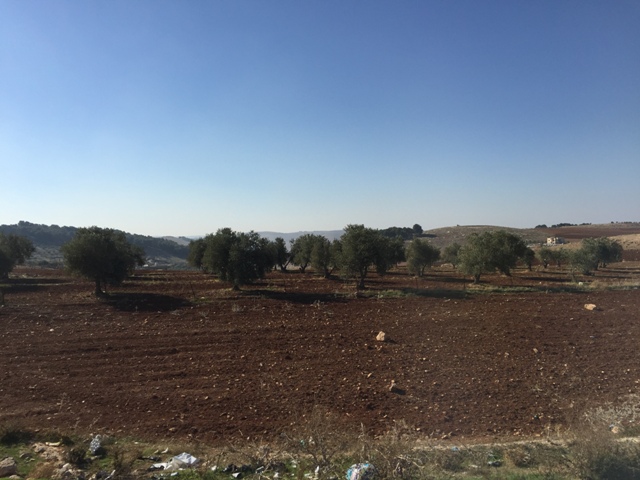 |
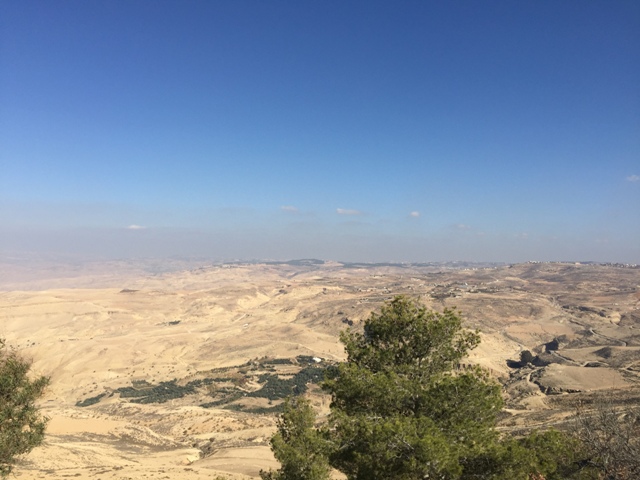 |
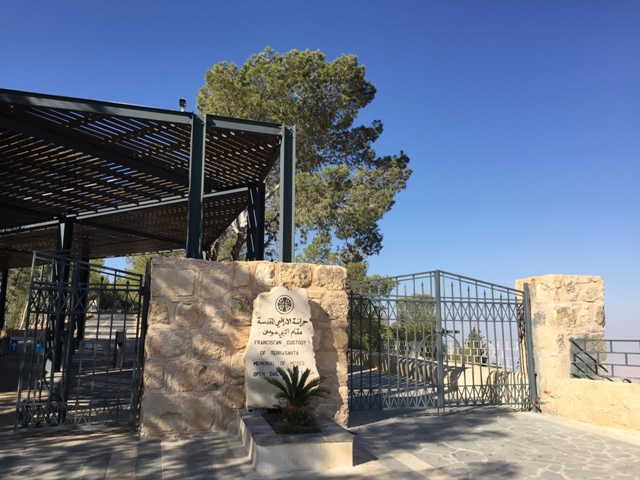 |
| Following the visit to St George, we made a quick drive to the Moses memorial on Mount Nebo. Here is where Moses was alleged to have been granted a view of the promised land. But from our view, it seemed like the land appears to be parched. Not quite the view we had expected. And Moses is also said to be buried here on this mountain too. The church at the highest point was only rediscovered in 1933 and restored. All around outside the church are large sections of mosaics that date to Byzantine times (530s) when the church and monastery was constructed. | ||
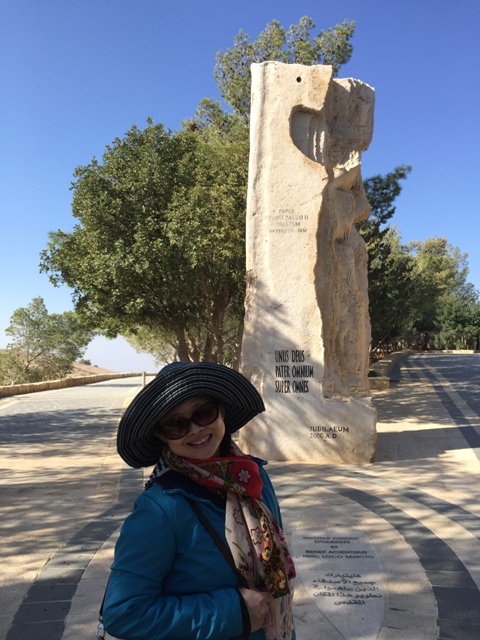 |
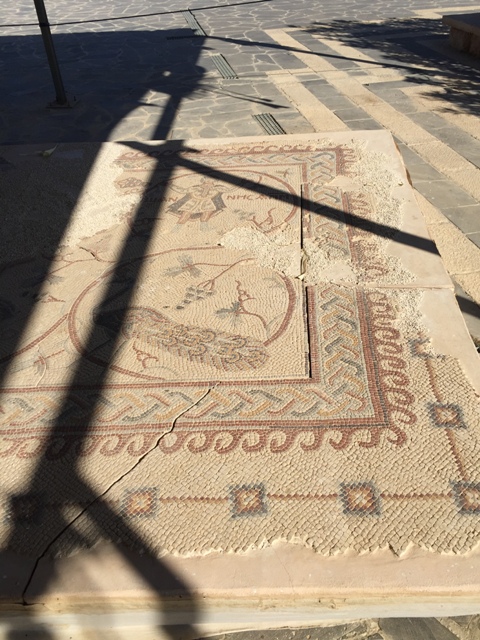 |
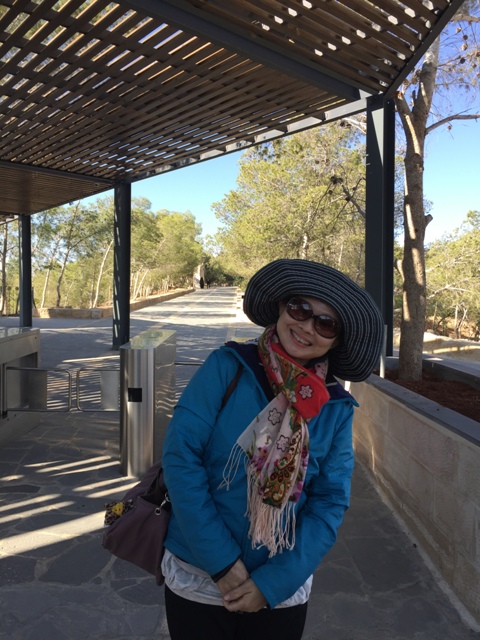 |
 |
 |
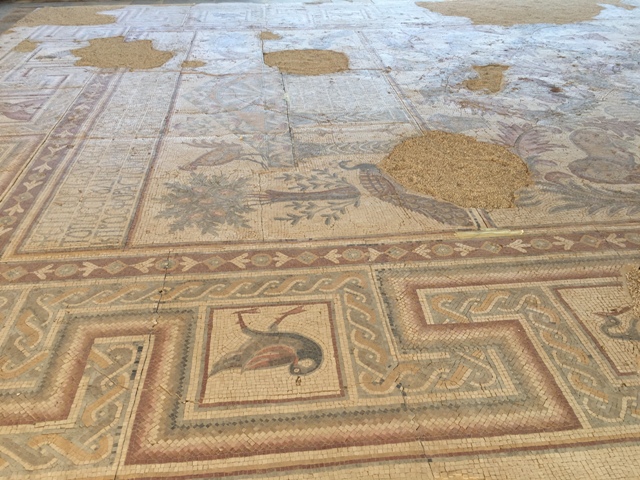 |
| Unfortunately the church was abandoned from the 16th century and largely undisturbed until its rediscovery. There is one with hunting and herding scenes and many other animals “distributed” across the mosaic. After nearly 1500 years they are still in such good condition. Imagine that! Little were we to know, but there are many mosaics here too! | ||
 |
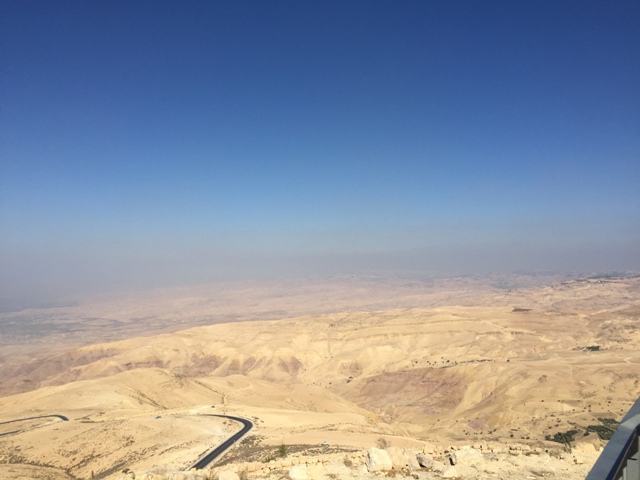 |
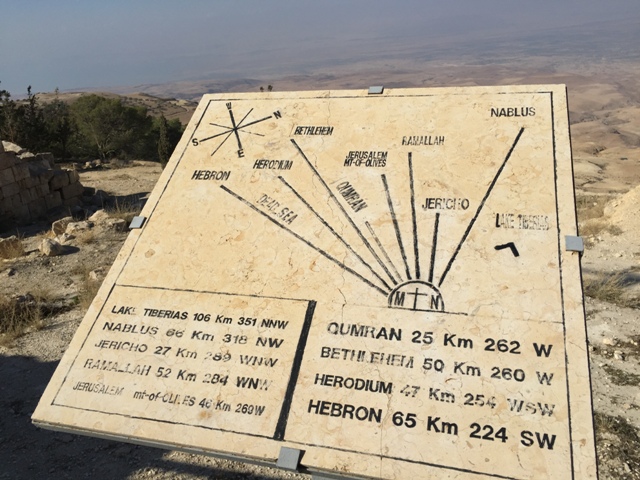 |
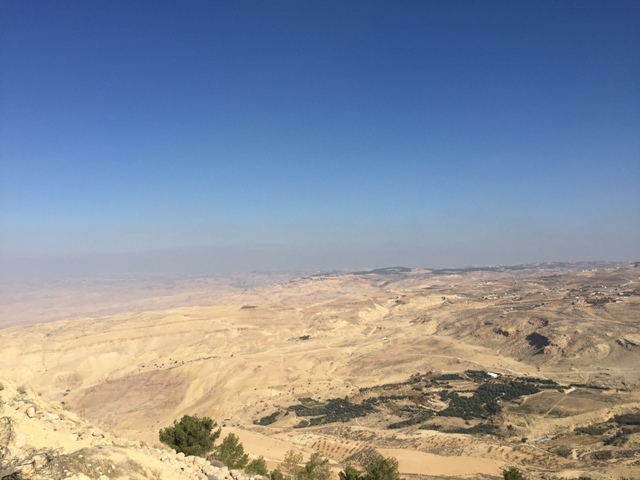 |
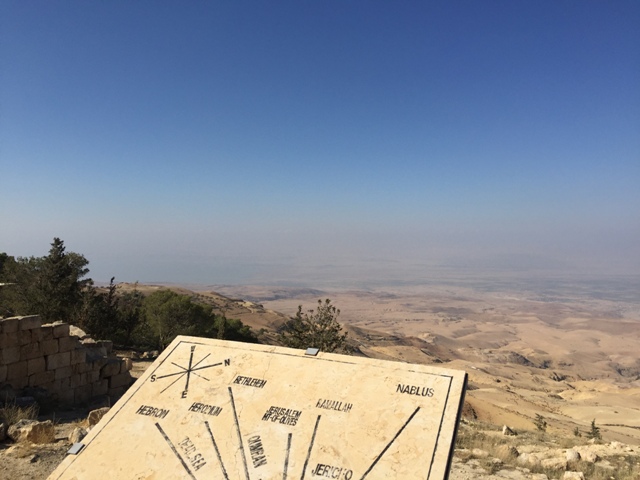 |
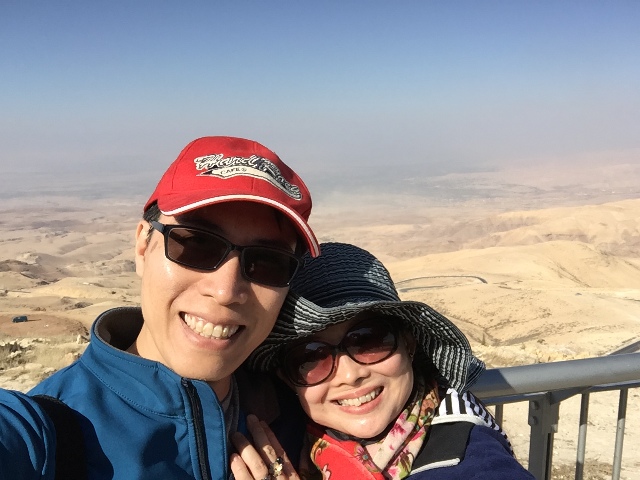 |
 |
 |
 |
| The Brazen serpent monument set in the summit. Now they say that on a fine day one can see all the way to Jerusalem, while Jericho is usually visible. But we saw none of that except the haze in the distant. Perhaps the pollution of the past was less. Or quite simply we were there on a not-so-good day. | ||
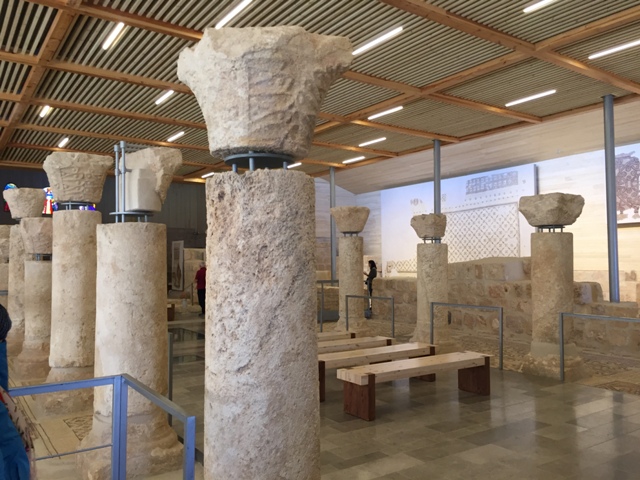 |
 |
 |
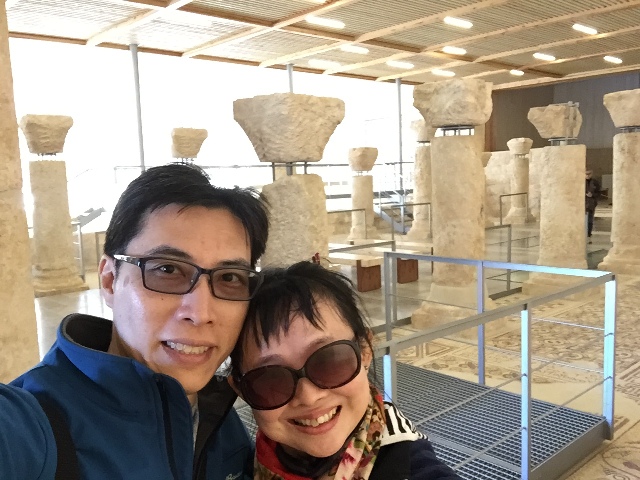 |
 |
 |
| The church still holds services. Be quiet about photo taking! Actually we are lucky. Come any earlier than 2017 and one might not had been able to access the memorial, for it was closed since 2007 and only reopened in October 2016. You might know that this place had been purchased by Franciscan order of monks in 1932 and is administered by them since. | ||
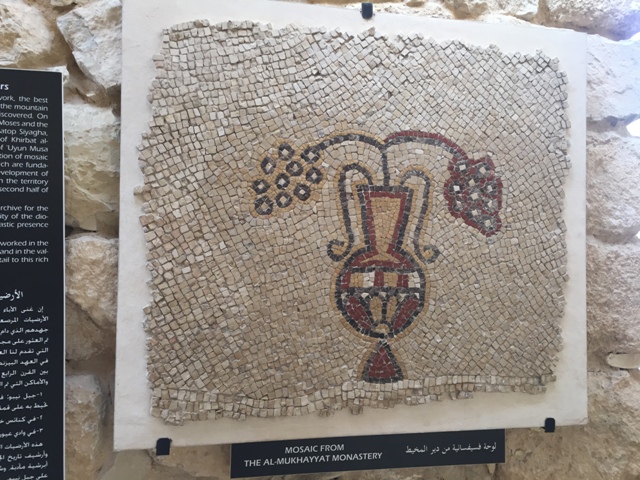 |
 |
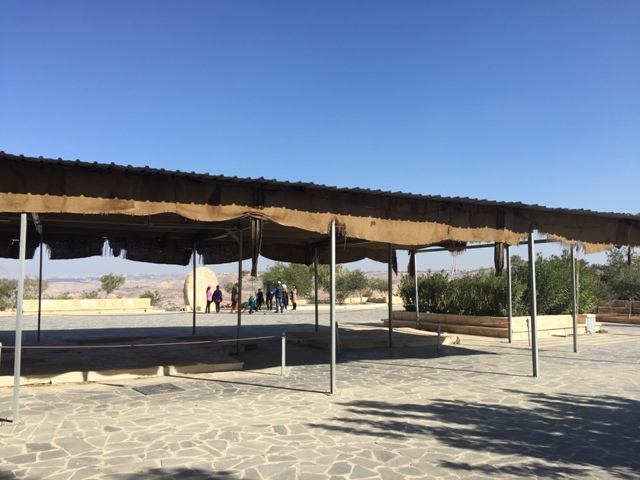 |
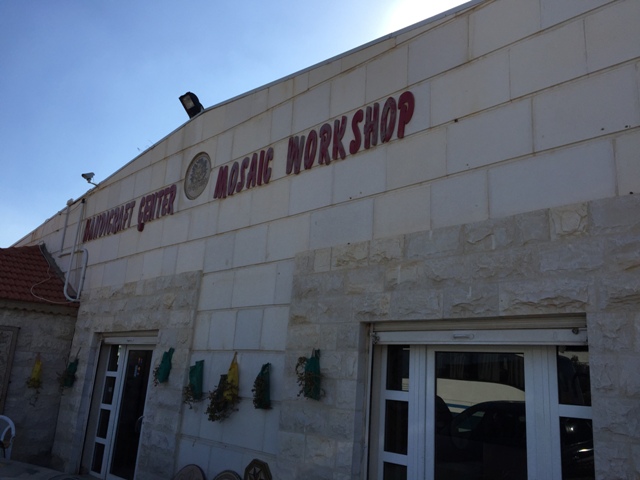 |
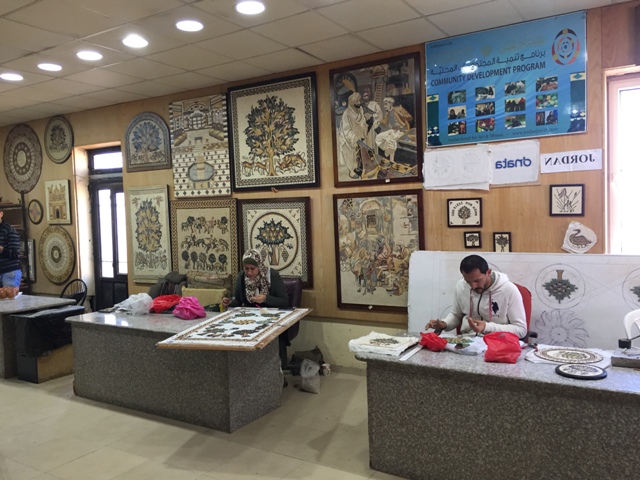 |
 |
 |
 |
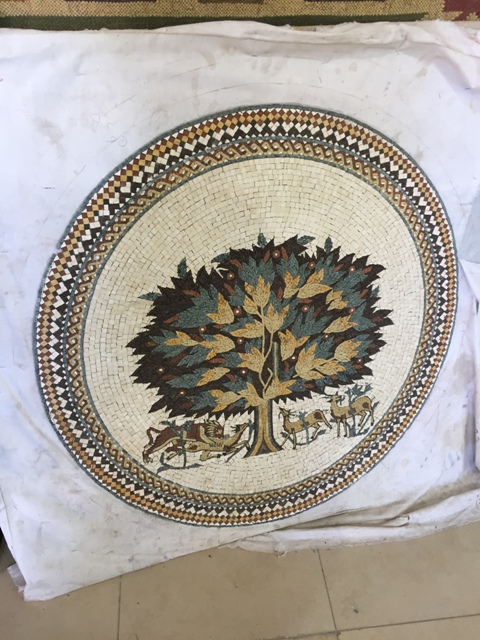 |
| And when in the area how can one not be brought to a factory where the modern day mosaics are still produced as they were 2000 years ago? Now they say that natural stones are cut into the requisite blocks and then assembled by hand. And so it takes 6 months or so to create large intricate products that grace table tops or picture frames. Well, traditional way or not these pieces were pricey. Of course they offer to ship them back to your country too… | ||
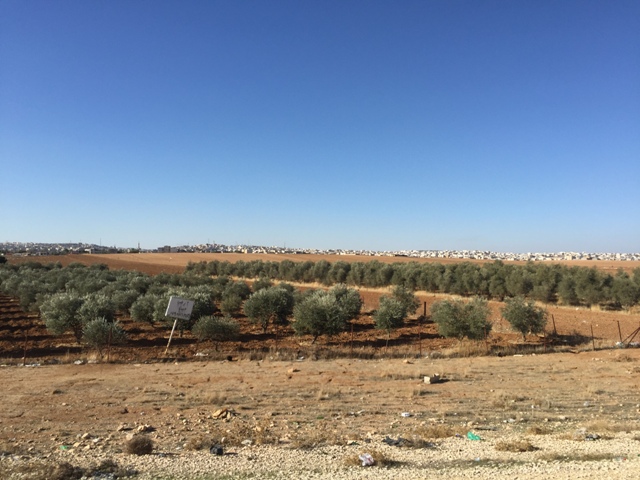 |
 |
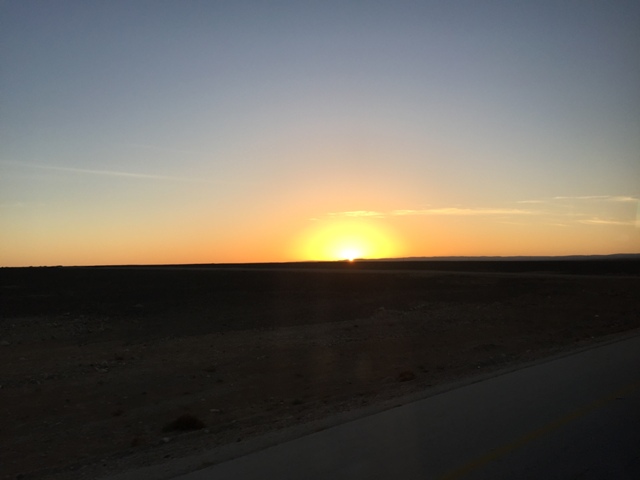 |
| Without buying much, we moved on. It was another 2½ hours of driving and another toilet stop before we reach Petra. As we drove, the sun began to set. Soon, it was behind the mountains. Tomorrow we shall be at the highlight of the entire journey. Time to have a good meal and tuck in early for a good rest. | ||
It was incredible to see the mosaics still in such condition after more than 1500 years. Granted there was restoration works of some kind on them – partly to piece them together, or what’s left of them… jigsaw puzzle lovers should enjoy this but it is a serious endeavour.
But tonight we really went to bed early after a fabulous dinner at the Movenpick hotel. For tomorrow morning’s the highlight for us in the entire 2 weeks’ journey. Nothing else matters honestly to us than to make the most of the day (tomorrow) to see, touch and smell Petra.
| 17th December Oh man! We were sooo bushed after the day’s walk! 52 floors of climbing according to the health app and more than 14km in distance. Wow, we touched almost all of the beaten sites within the complex… not! Finally can tick off this bucket list item. |
||
 |
 |
 |
| At 7:30am in the morning, we began our day’s work. Yep, the early bird will indeed get its worm. In this case the great pictures without massive crowds. But little were we to know that it would not be that crowded anyway… The way from the visitor center starts with the Siq. Now you need to walk just a little along the Bab Al-Siq before you come up to folks in carriages offering you rides. But that’s not it. | ||
 |
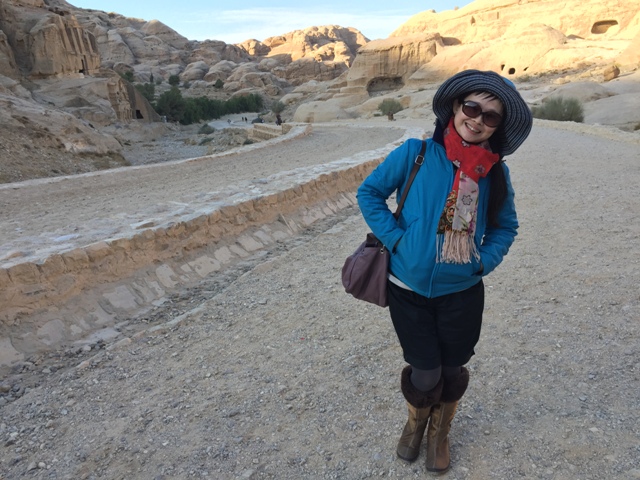 |
 |
 |
 |
 |
| For even this far outside from the ‘actual site’ there are already burial chambers such as the Obelisk tomb. It shows potential Egyptian influences doesn’t it? Or perhaps this was the kind of designs that were already in vogue back in those days? | ||
 |
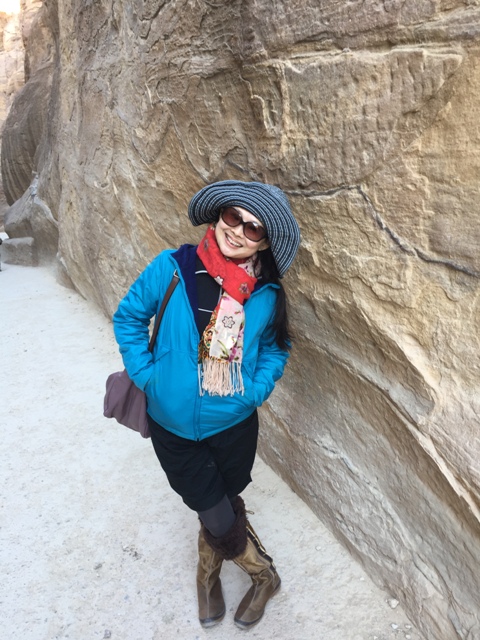 |
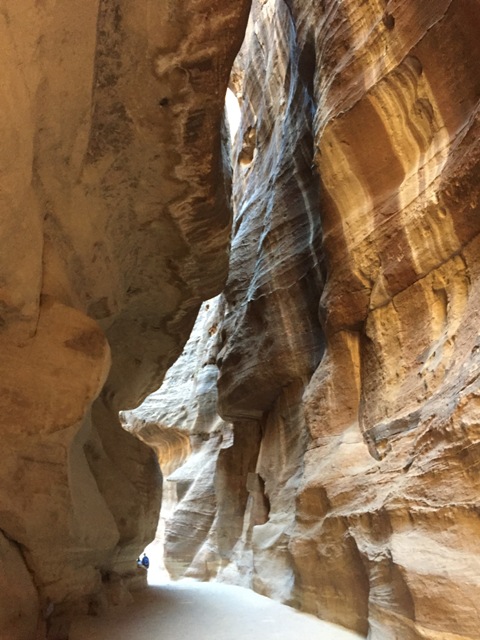 |
| Yes. The “city” was partly a necropolis. A city of the dead. But unlike the way the Egyptians had the west side of the Nile to built funeral tombs, the tombs of the Nabateans seem to co-exist with the living folks along with temples and other civic building. ↓ What do you think this was? A channel for collecting water? | ||
 |
 |
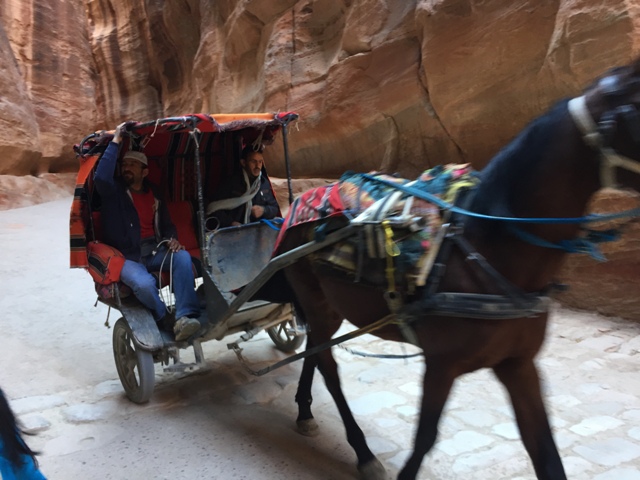 |
 |
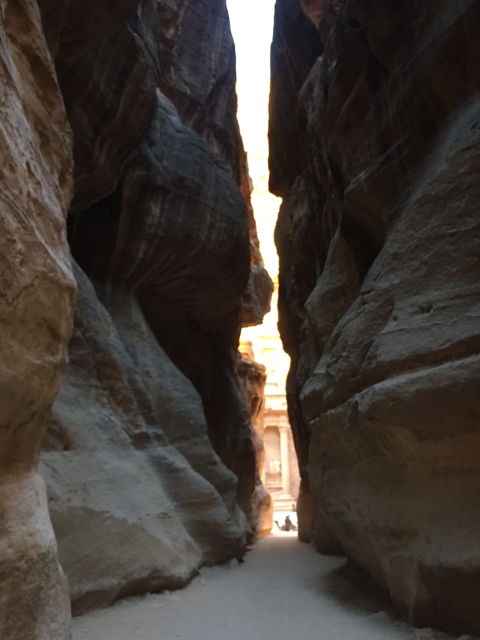 |
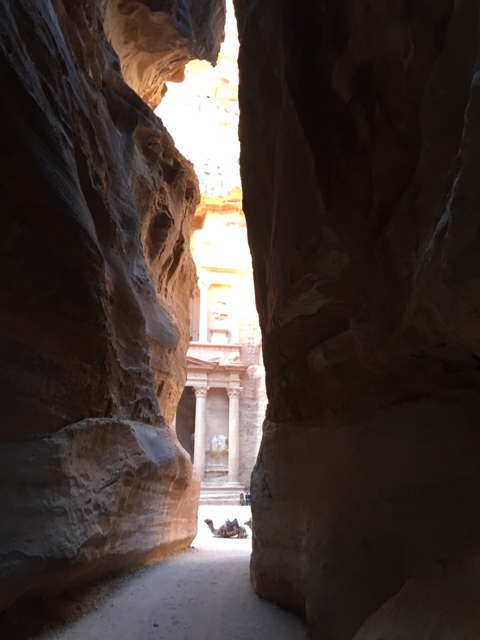 |
| And imagine how would this city function as a trading center? For one thing the long and winding, sometimes rather narrow Siq is a natural defense mechanism limiting intruders from making massive invasion into the city. The horse carriage took nearly all the pathway, so imagine a large number of soldiers trying to march in against the defenders shooting at them! And here’s that million dollar view that Harrison Ford supposedly paid for. And the iconic shot that Mel always wanted – taken from his own camera not from the web. | ||
 |
 |
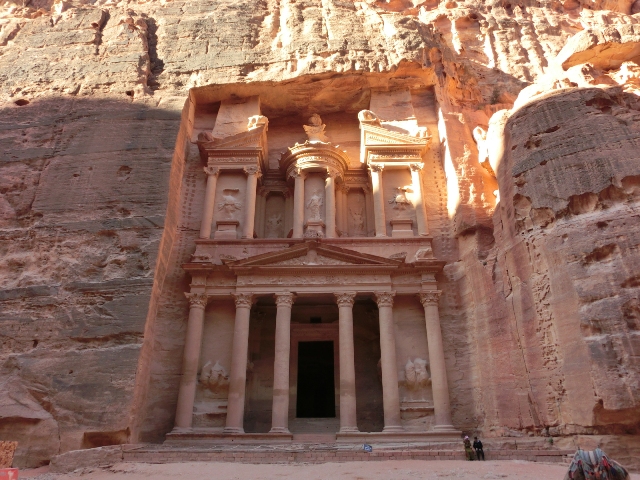 |
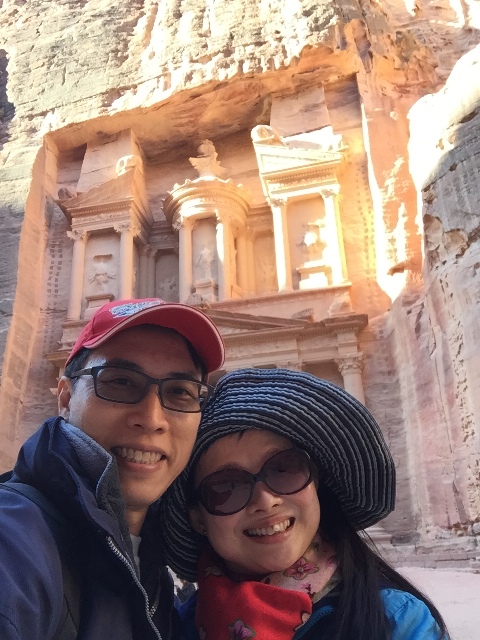 |
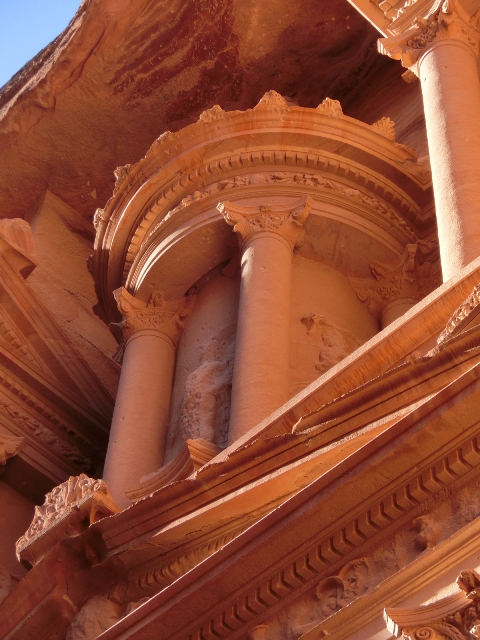 |
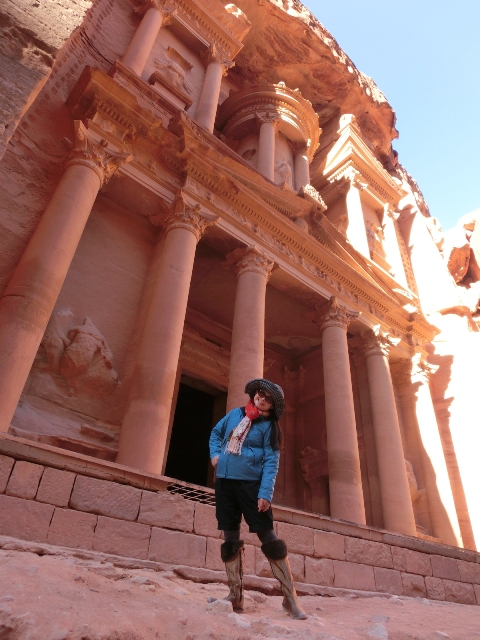 |
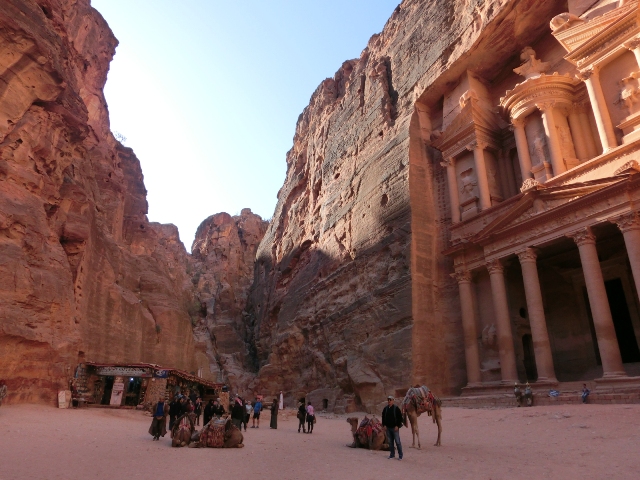 |
 |
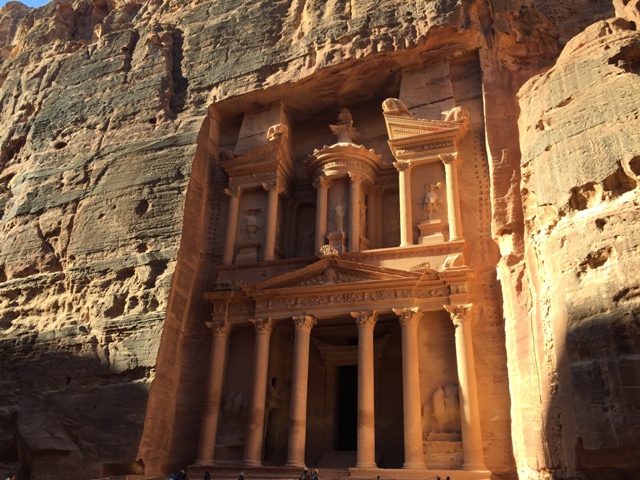 |
| The By now most folks know that the ‘Treasury’ is a tomb of a King. People might expect decorations within the chambers of this tomb but it is not to be. In any case there is no entry into the tomb and two Roman “guards” perpetually sit at the facade area waiting for folks to take a photo with them (for a fee of course). Best time to be here is 9-10am as the sun shines onto the tomb. Style is clearly Greco-Roman with all the columns. Which gives a clue when this was constructed? See how the light from the rising sun illuminates the facade gradually. One can never stay here long enough, but we must move on! | ||
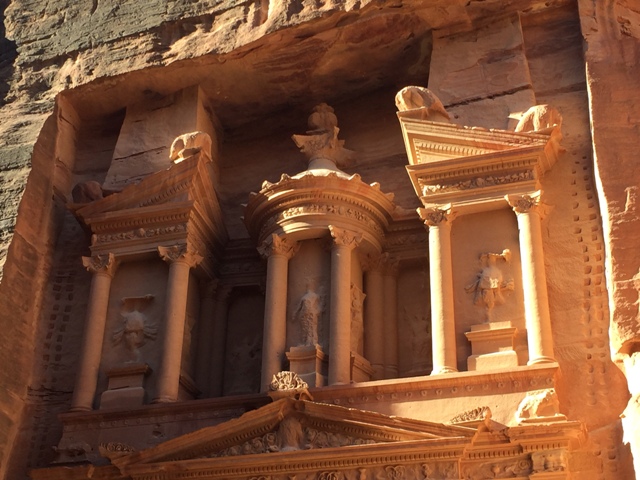 |
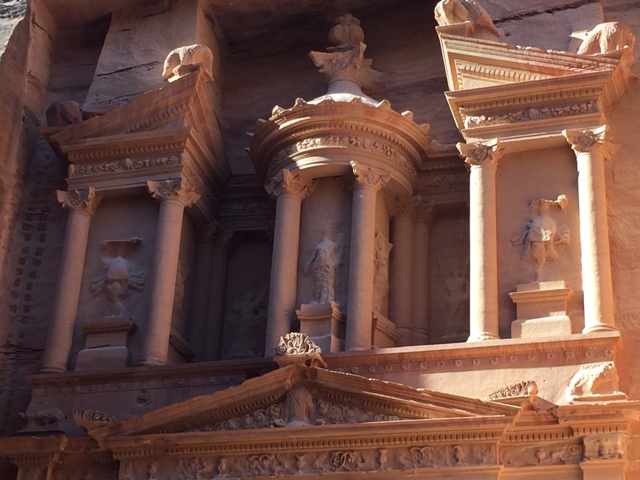 |
 |
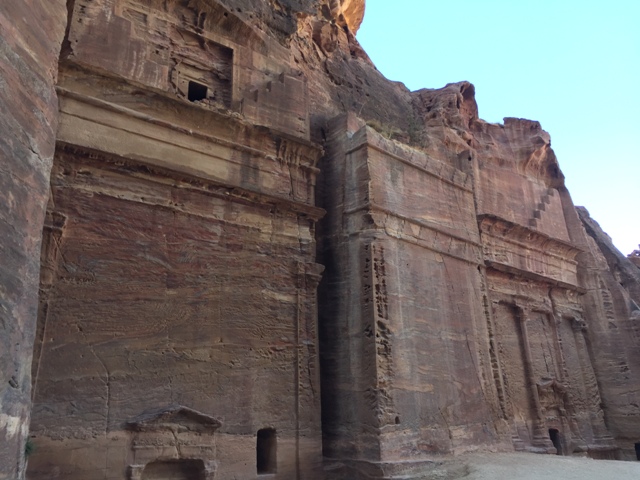 |
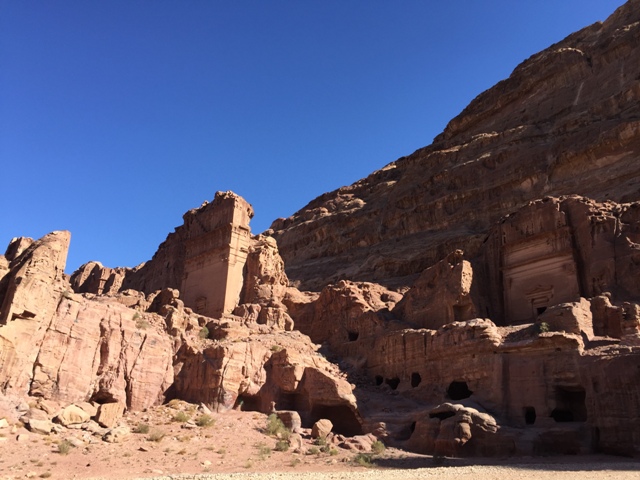 |
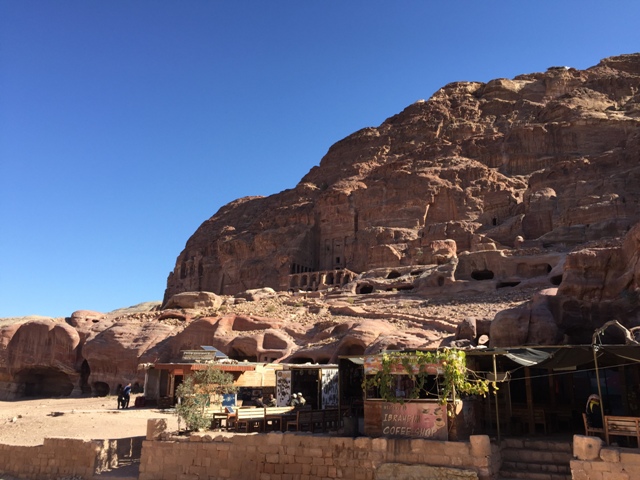 |
| And as we walked just a little further away the pathway widens with tombs on both sides. The left side has ones that are really large and extends up the cliff while the other side are smaller – the street of facades. The guide book suggests that the large ones are for dignitaries while the smaller ones are for common folks… and they are said to be of Assyrian design signaling that the Nabateans weren’t the first ones here. Good point to note : there seems to be little shops and cafes set up all over at intervals, providing a place to rest from the walks. | ||
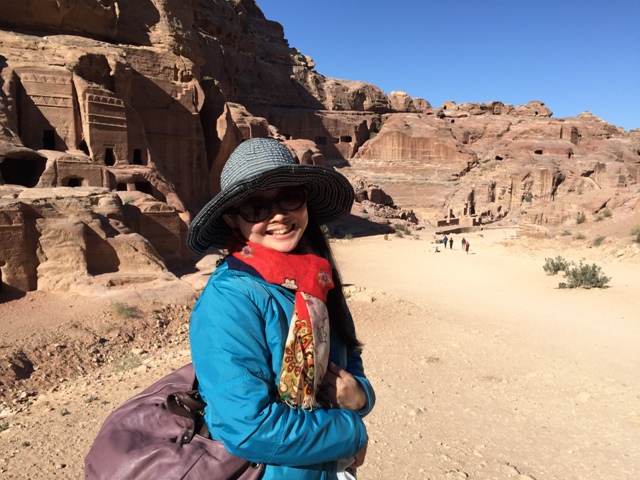 |
 |
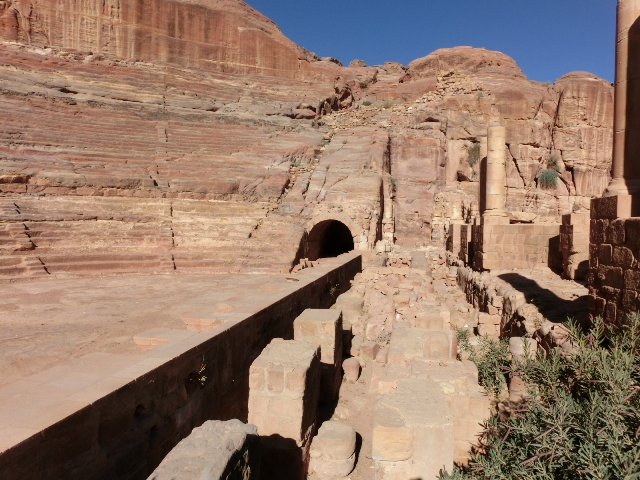 |
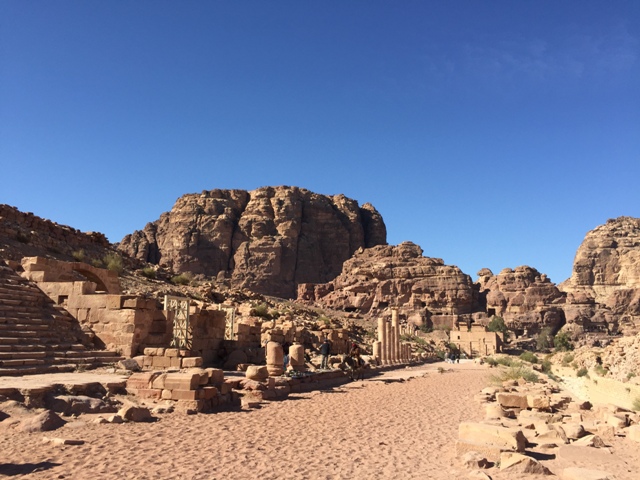 |
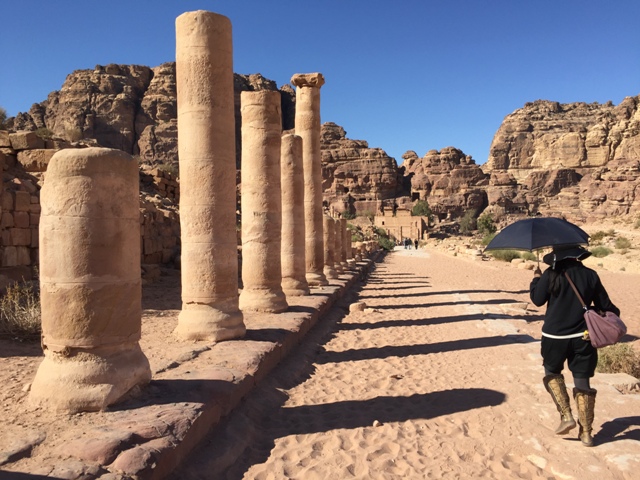 |
 |
| Immediately after the street of facades, we came up to the Nabatean theater that seats between 7-10,000 people. Carved out of stone, it was said to be a religious venue until Roman times (Trajan annexed Petra in 106AD). If one were to walk on and look to the right, on the hills would be the royal tombs. But we determine to keep on track to the left and entered the colonnaded way. | ||
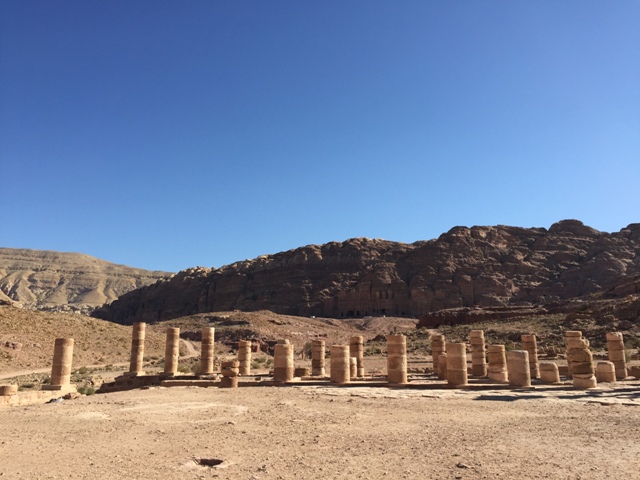 |
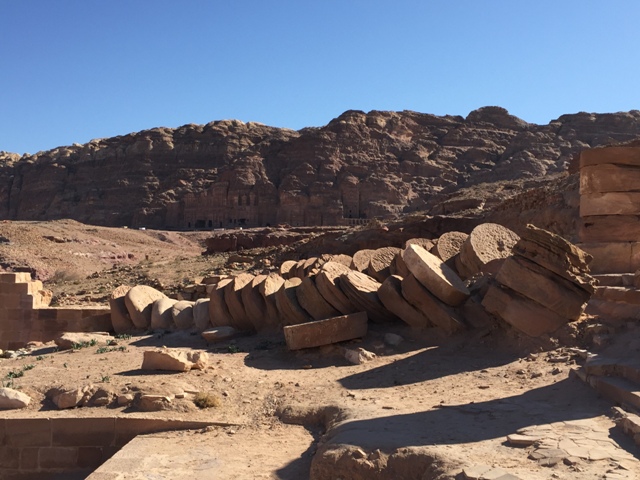 |
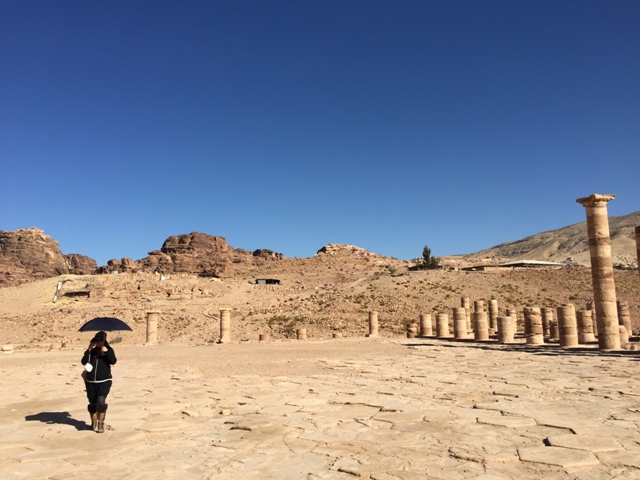 |
| Here, Brown university is still excavating the Great Temple. It was so large and consisted of two floors connected by a large and long flight of stairs. The columns are large as the rubble suggests. There are said to be homes and bathhouses at the back but we did not explore further. Gate of Temenos, as we leave the colonnaded street and enter the area of the Qasr Al-Bint main temple of the city. The guide books suggest that this main temple has anti seismic mechanism to prevent collapse… And at this point we chose to make the ascent to Al-Deir (aka the Monastery) instead of the Byzantine church. | ||
 |
 |
 |
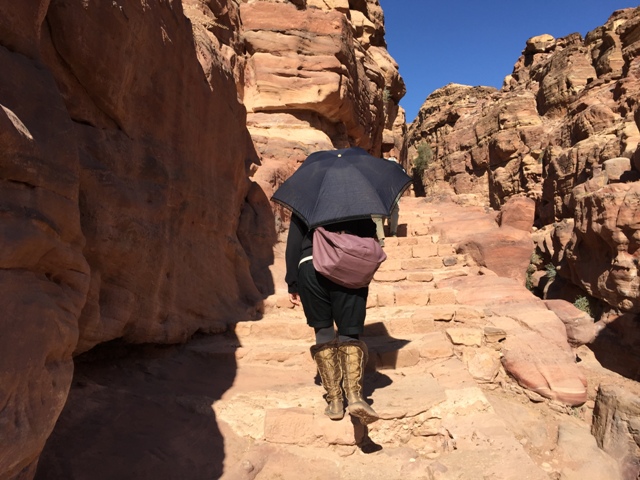 |
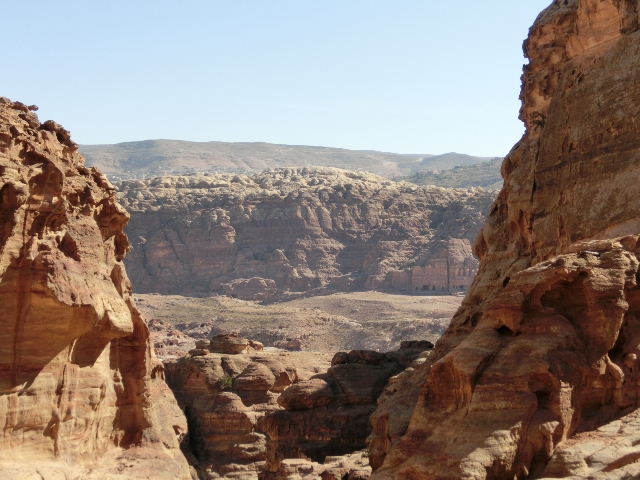 |
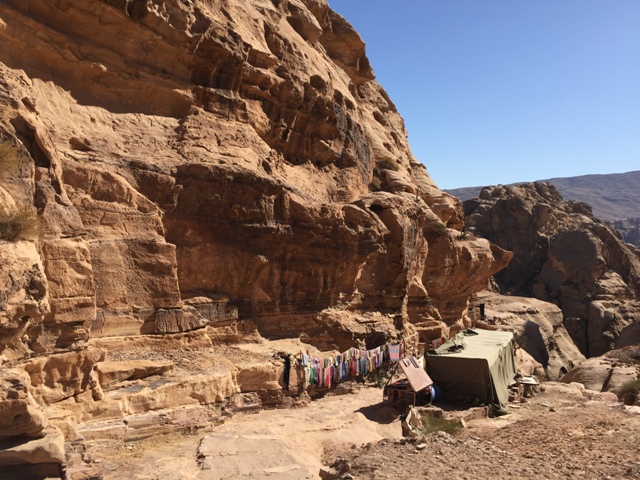 |
| 850 steps. That’s what all the guide books and web media suggests. In that near hour+ that we walked up, it certainly did not appear to be that little. Perhaps 10x more because our knees were begging us to stop. However one have to admire the Bedouins for running stalls along the craggy steps carved into rock. Ok we take it back. They do have mules or donkeys that seem to run effortlessly up and down. But when we reached the top, it was like having ascended Mount Everest. Now either very little people make it here, or it was really low season. For we had it mostly to ourselves and perhaps 20 others… | ||
 |
 |
 |
 |
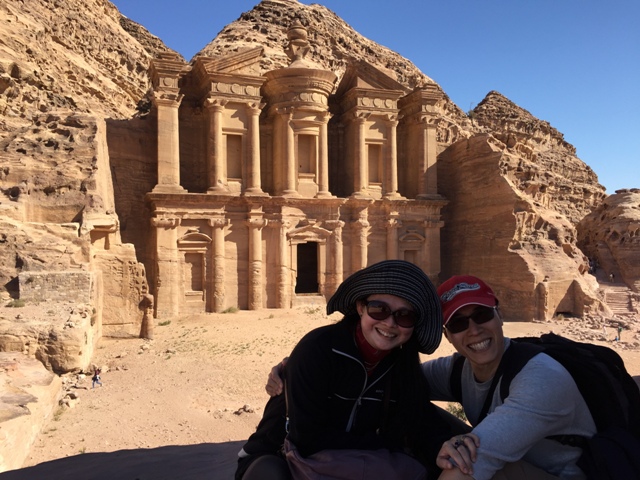 |
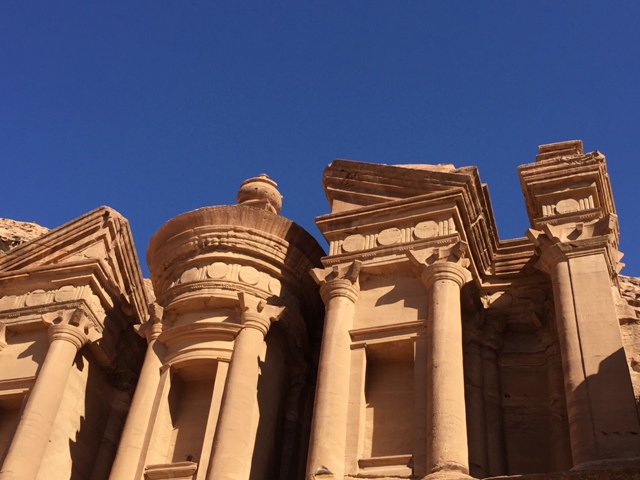 |
| Yet another tomb for a victorious Nabatean King, the Monastery is simpler than the Treasury but no less smaller. One should spend time climbing around to see over the Wadi Araba, but we were bushed and decided to make our way down. | ||
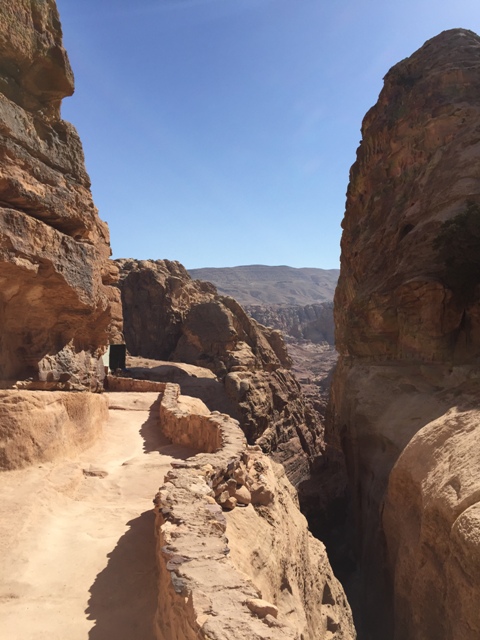 |
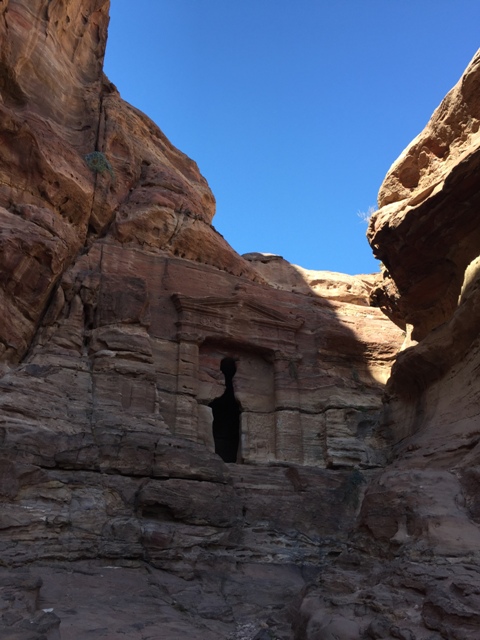 |
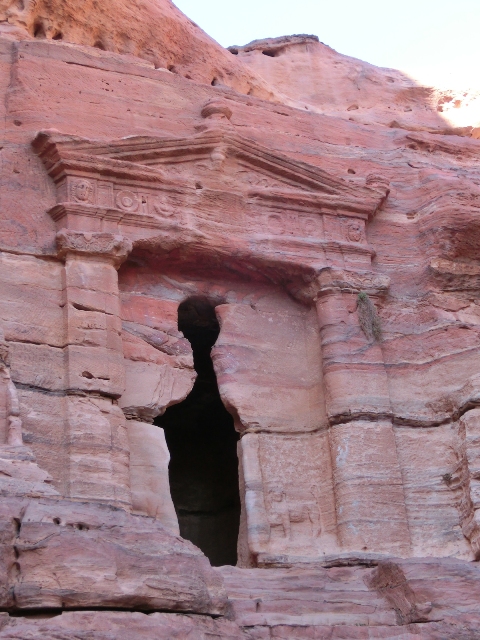 |
| The Monastery got its name because in the Byzantine era it was used as such by the early Christians. On the way down, aside from donkeys we saw the Triclinium. We had seen it on the way up and determined to take a look now that we are going downhill. One might note the faint carving of lions on both sides of the entrance to the cave. Likely a funeral venue where banquets were held. Tip: cost of mule/donkey ride is US$15pp. Take it on the way up and save some effort for the walk at the summit instead. | ||
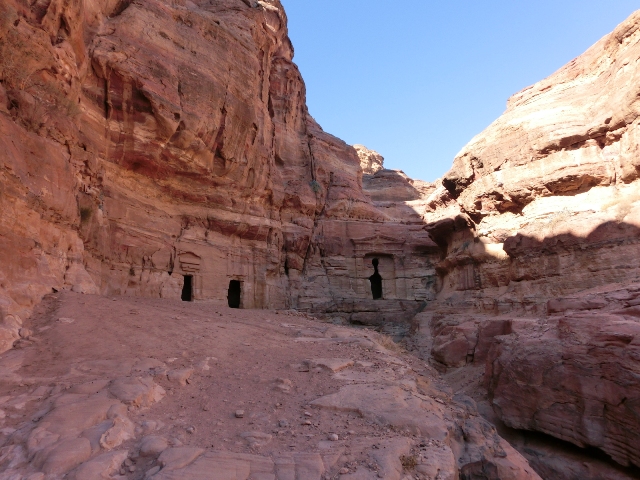 |
 |
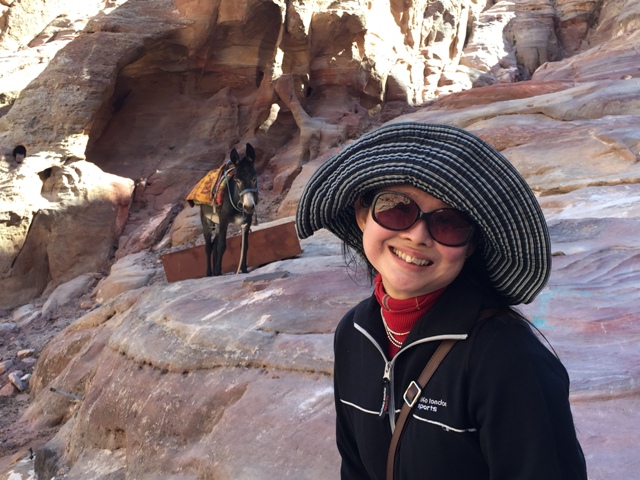 |
| As we skipped past the museums and Byzantine church (due to time constraint), we came up to Mt Khubta where 5 royal tombs are carved into the rock face. We walked up to the mountain from the Urn tomb we turned and made our way further down to the largest of them all, the Palace tomb. It spans three levels and have cavernous entrances. | ||
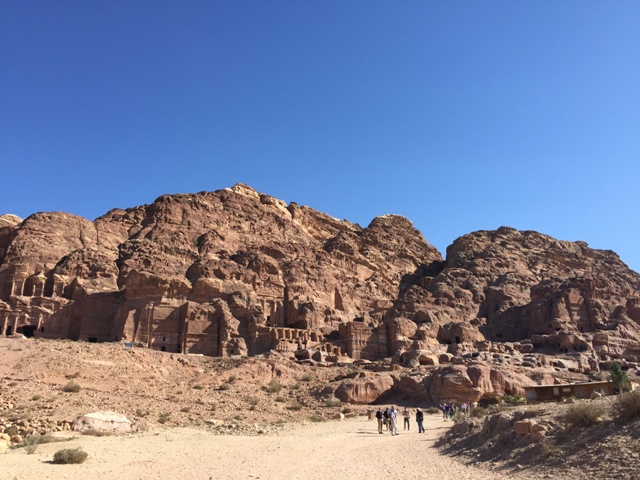 |
 |
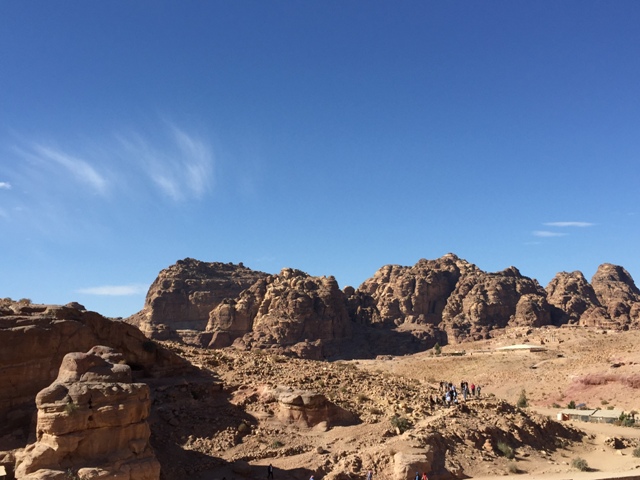 |
 |
 |
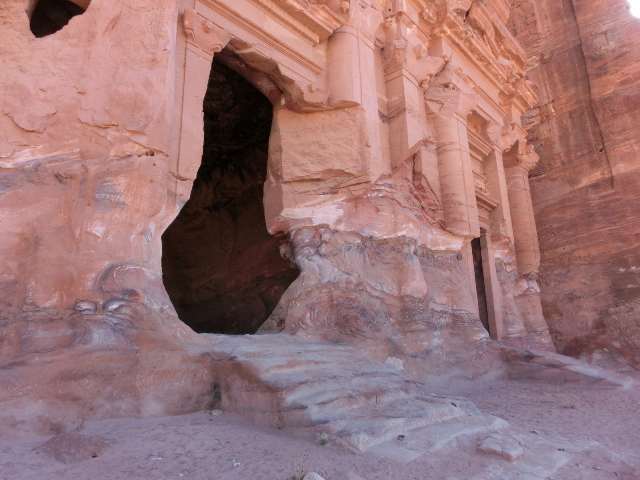 |
| ↓ Next to it is the Corinth tomb. Slightly smaller and looking a little like the Treasury, it is worn down probably from all that erosion – being in the direct line of the wind and sun. And the smallest of the 4 here would be the Silk tomb (below right picture). They say it is colorful, but to us it is because of the many sedimentary layers of rock that are visible as the tomb was carved into the cliff that makes it stand out. | ||
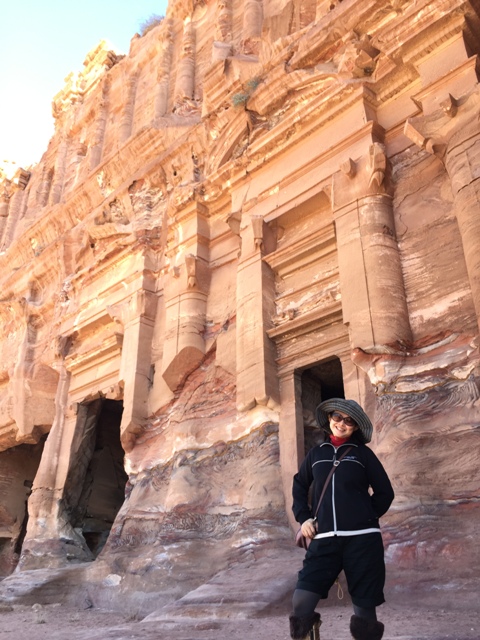 |
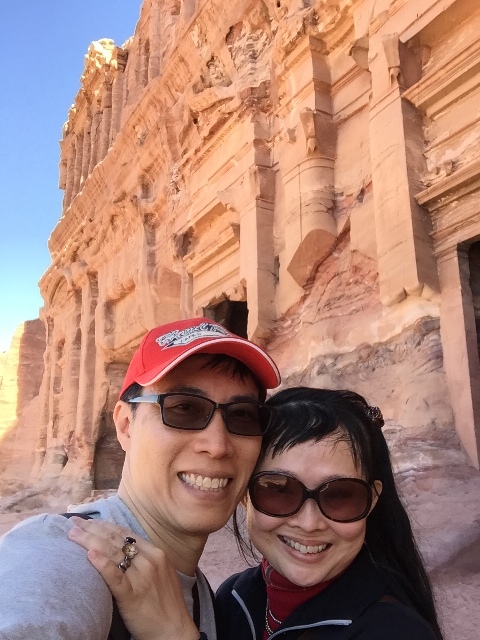 |
 |
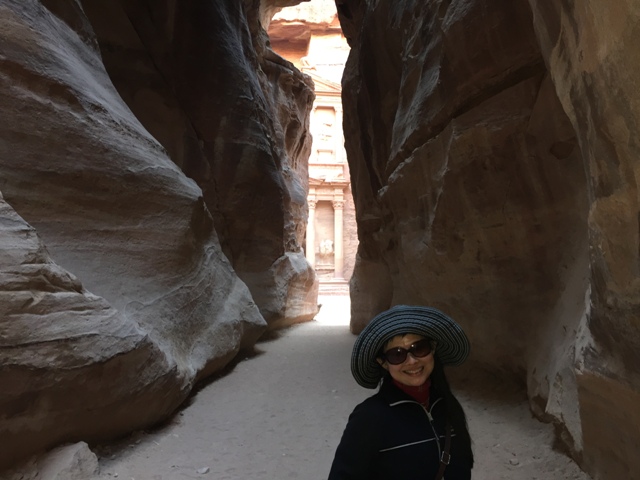 |
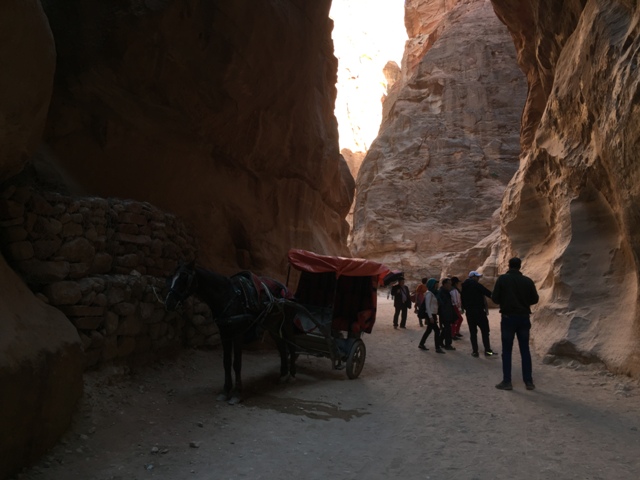 |
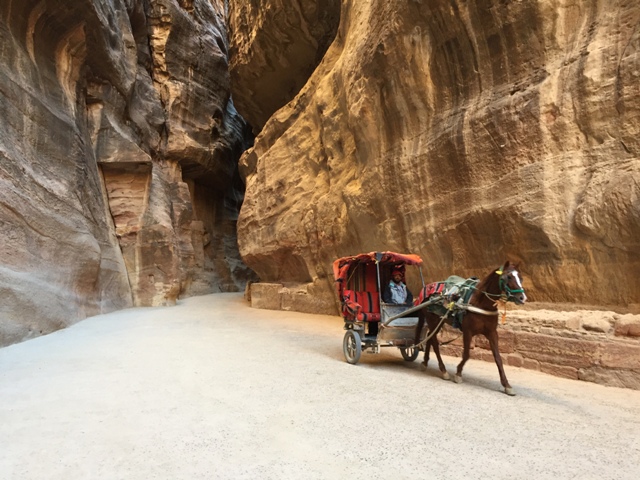 |
| In hindsight, we really should have taken the horse carriage (US$40) and not save on it. Not only would it have saved a lot of time, it would have given us opportunity to rest our aching feet. That is the true commodity required here – time. If one has to be here for only a day, then this is especially critical. Well, bucket list ticked! | ||
15 kilometres.
Or ~18,000 steps. That was what the fit bit says at the end of the day. But when we were walking it, did not feel the distance. It surely looked a lot less, though our feet did signal to us to take break. Which we heeded not… heheh.
In a way we could say proudly we walked it all. Well not exactly. We mean that we’ve walked all the way and not gotten any assistance. And like heroes, we felt the crown on our heads as we left the site. If there is really only one tip we have to you dear reader, it would be – take the damn horse carriage and donkey to wherever you want to go in the site. Saves time and that’s what you need.
| 18th December The drive out to the deserts of Wadi Rum was not as dramatic as we anticipated. Probably because we did not get too far out. And the safari lunch, definitely not what we thought it would be… |
||
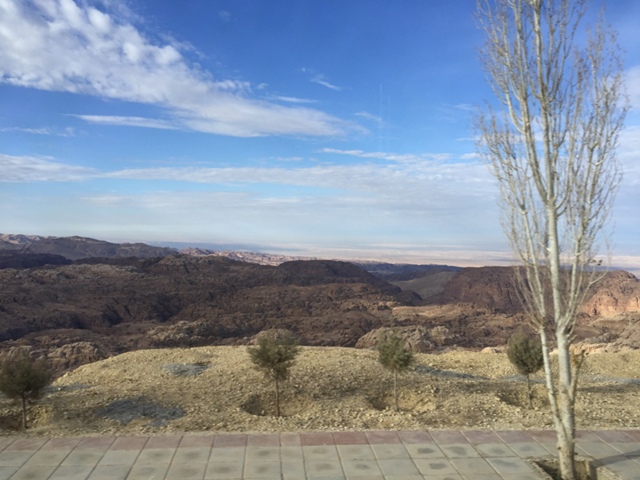 |
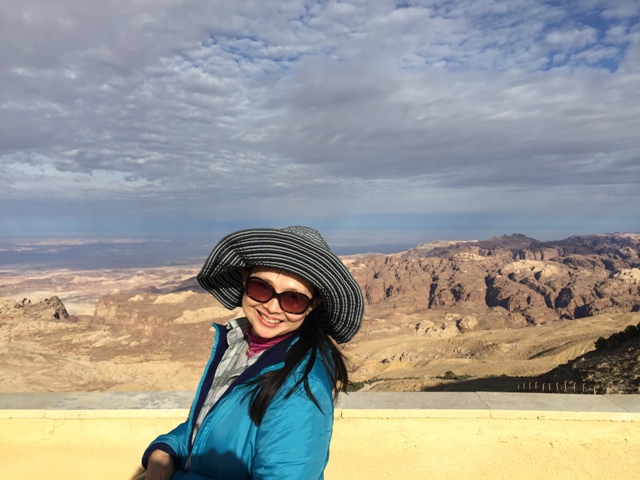 |
 |
| It is about 2 hours (110km)’s drive from Petra to Wadi Rum. And as we got on the way we made a stop to gaze upon the vast Negev desert that buffet Israel’s southern borders with Jordan and Egypt. But soon, we were to enter the valley of the moon. Our guide told us that; despite being a desert, there is water underground and the Wadi! | ||
 |
 |
 |
| It provides most of the water that Jordan consumes so he told us. Said to be between 30-400m deep, the aquifer not only supplies water but also support organic farming. Incredible as it sounds, that could be collaborated since we might have seen it from 30,000ft high when flying into Amman. | ||
 |
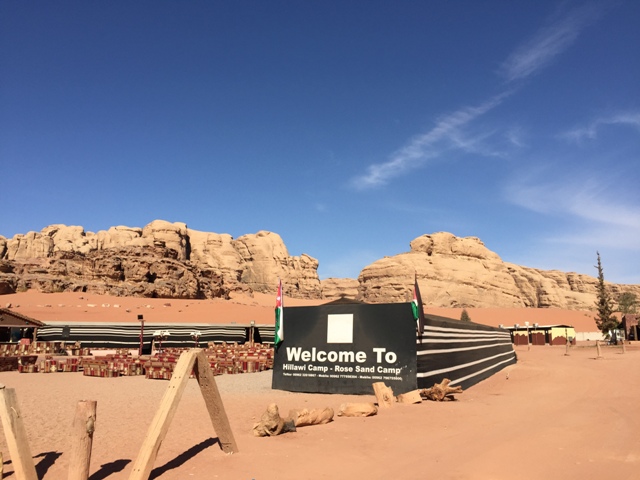 |
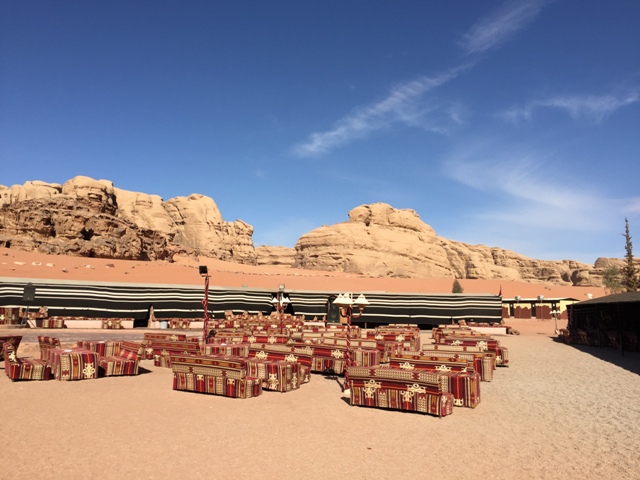 |
 |
 |
 |
| We are headed to Rose Sand camp, and before we even got in we saw that accommodations are available for those who wish to stay out here for longer periods. But we are only here for a 2-hour jeep drive into the valley of the desert. Hopefully we drive far out enough not to see the power lines that provide electricity to the area and Aqaba. It is an open jeep, and you need to cover up your face with a scarf or face mask to shield one from the sand that gets whipped up whenever the driver decides to drive down a sand dune. | ||
 |
 |
 |
 |
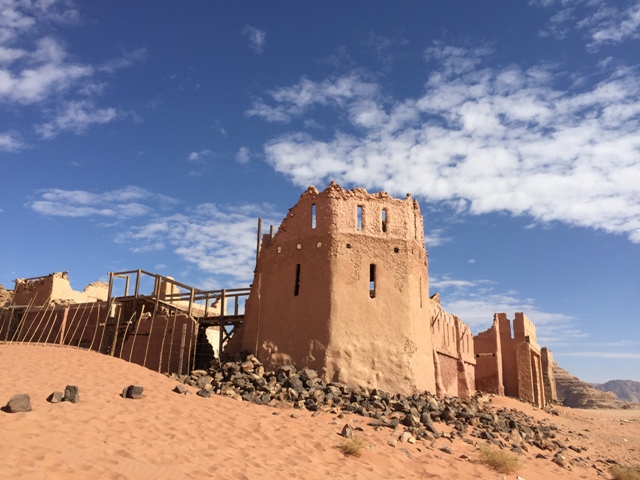 |
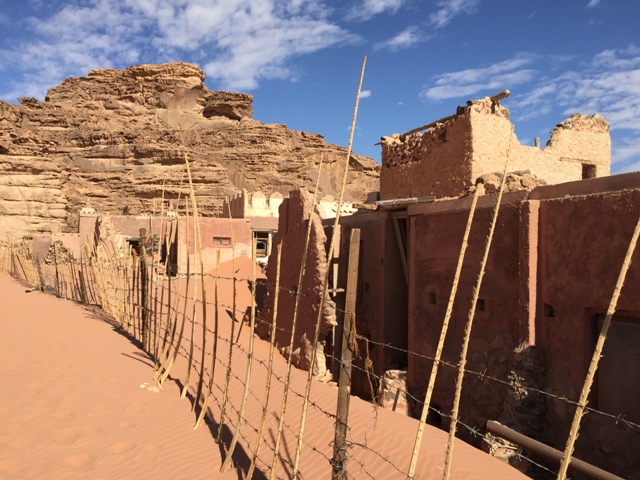 |
| Yep, it can be exhilarating but hang on and don’t fall out of the jeep! But then the patterns of the sand do make you think you are on a sea of shifting sand! We came up to a disused film set in the middle of the desert. Now the desert here is also known for its connection to Lawrence of Arabia, who passed through on the way to Arabia. Do you know why? Now these little tracks sure weren’t made by us or the jeep. Hmmm…. wonder what creature could have made them? There are lizards, snakes and spiders. But this one’s most likely made by a common black beetle… | ||
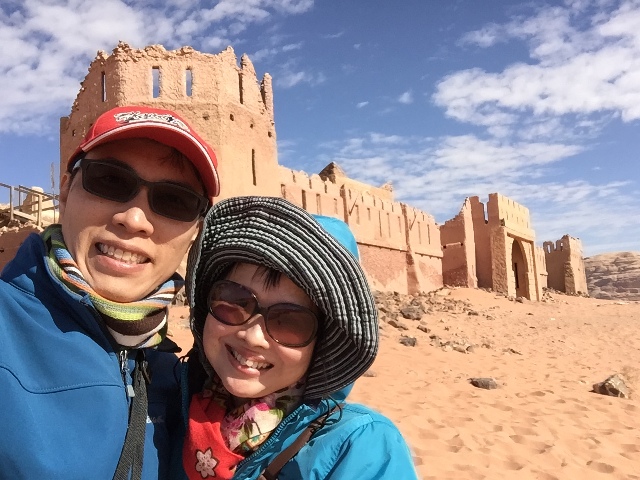 |
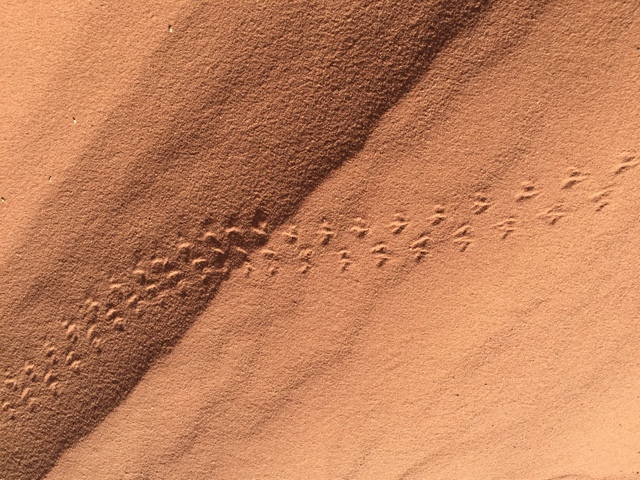 |
 |
 |
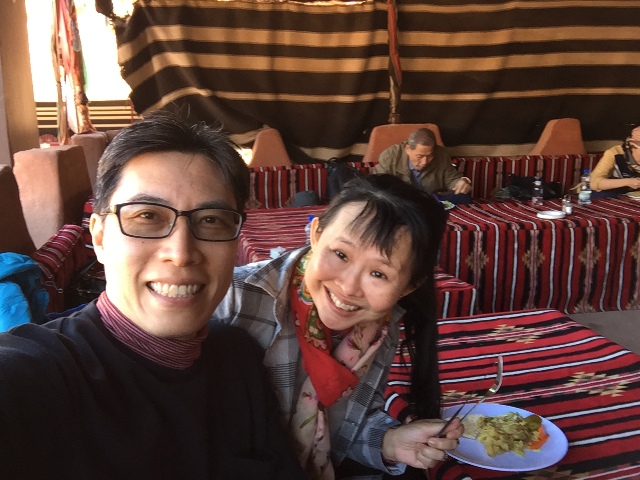 |
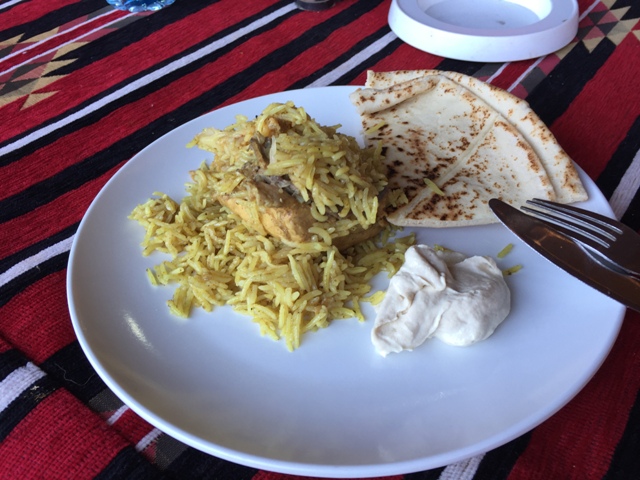 |
| Have you tried walking up a sand dune? Well we tried and it seems that it’s one step forward and two steps back… but enough of sand, for it was time to get back to the camp for a simple caravan lunch. We loved the rice with cauliflower so much that we went for seconds… perhaps it was all that excitement that whet up an appetite. | ||
Now we had expected a little more from Wadi Rum in the form of the scenes that can be seen. Perhaps we’ve seen too many photos taken by other travelers who actually hiked out into the desert and climbed some of the peaks. But don’t expect that from a simple 2-hour drive around the sand dunes.
We drove back to Amman for the night.
And in the following morning we made towards Allenbey bridge crossing into the West Bank. There, we were to exchange coaches and clear Israeli customs before boarding a new coach. It would be an intriguing experience and we tell you as you continue onto Israel for Part II.
December 2017

I am headed to Israel and Jordan in the Spring. I can’t wait! Your posts are making more impatient. Any tips you can give me for the journey to Jordan from Israel?
LikeLiked by 1 person
Are you on your own? If so, there are buses that run between the two sides at Allenbey crossing. Which is where we crossed over. Just that you will need to check them in and have the porters transport it across.
LikeLike
Excellent write-up on an area that has been on my bucket list for far to long now.
LikeLiked by 1 person
We encourage you to go. It is far safer and enjoyable than made out to be in the media. This one’s a tour group, but you can easily get around on your own too
LikeLike
Wow… lots of walking. I think my legs would give way before I can clock 10k steps.
LikeLiked by 1 person
Oh absolutely! Mel’s shoes wore out at the end… and we still refused to take the donkey ride back!
LikeLiked by 1 person
Wow, what a trip! 🙂 It took me quite awhile to read the post over a couple of days, but it was well worth it. The pictures and your narrative were so very informative and delightful! I especially liked Mt. Nebo, and of course Petra, and the jeep ride in the desert. It was also really nice to get to see so many photos of Mel with Suan. Although we always love to see Suan! 🙂
LikeLiked by 1 person
Mel is getting jealous… why is Suan getting all the attention? Heheh. Yeah, the photos and words might not fully convey the excitement, no exhilaration that we felt while on the road. It was like being kids again. Every day there was something new to look forward to!
LikeLiked by 1 person
I’m so happy for you both that the trip was such a great success! 🙂
LikeLiked by 1 person
You did so well to see as much of Petra as you did in one day without using the donkeys!
LikeLiked by 1 person
LOL…. the legs were aching, the shoes torn and the stomach growling!
LikeLike